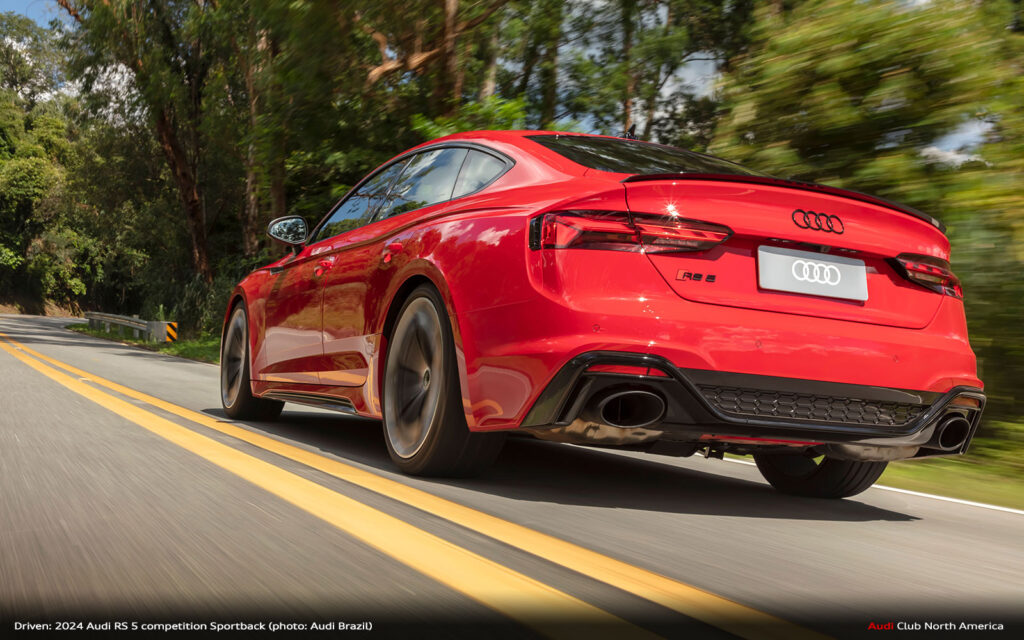
Driven: 2024 Audi RS 5 Competition Sportback
When you think of the Audi RS 5, the story of the three bears probably isn’t the first thing to come to mind. However, when considering the RS 5 Sportback, particularly configured with competition package, we’d argue maybe you should…
Well, more specifically, you should probably think of Goldilocks, the individual who wandered into their house in search of something “just right”. You see, we’d argue that is the spot in which the RS 5 competition resides in the Audi RS car lineup.
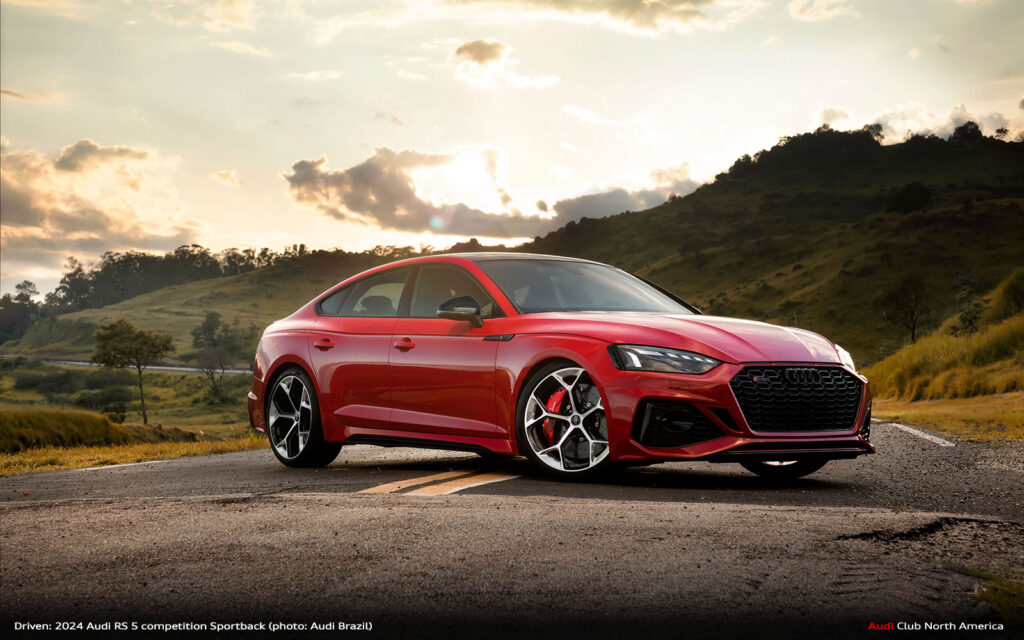
That’s not to slam the rest of the RS range. The RS 3 sounds like a vintage ur quattro with its 5-cylinder engine, though its small and tossable size is an exercise in elbowing when traveling with other larger passengers. The RS 6/RS 7 pair are legendary as well, but so wide that a drive down most public two-lane roads only has you picking an apex line should you cross the double yellow – parking spots and roll-through car washes are virtual invitations for door dings and scraped wheels. So… a bit too small and a bit too large then.
That’s where the RS 5 comes into the picture. Based on the B-segment component set of Audi’s MLB-evo scalable architecture with longitudinal engine configuration, the RS 5 sizes up right in the heart of the luxury automobile market, weighing in against the likes of the BMW M3 Sedan or Mercedes-AMG CLS 450.
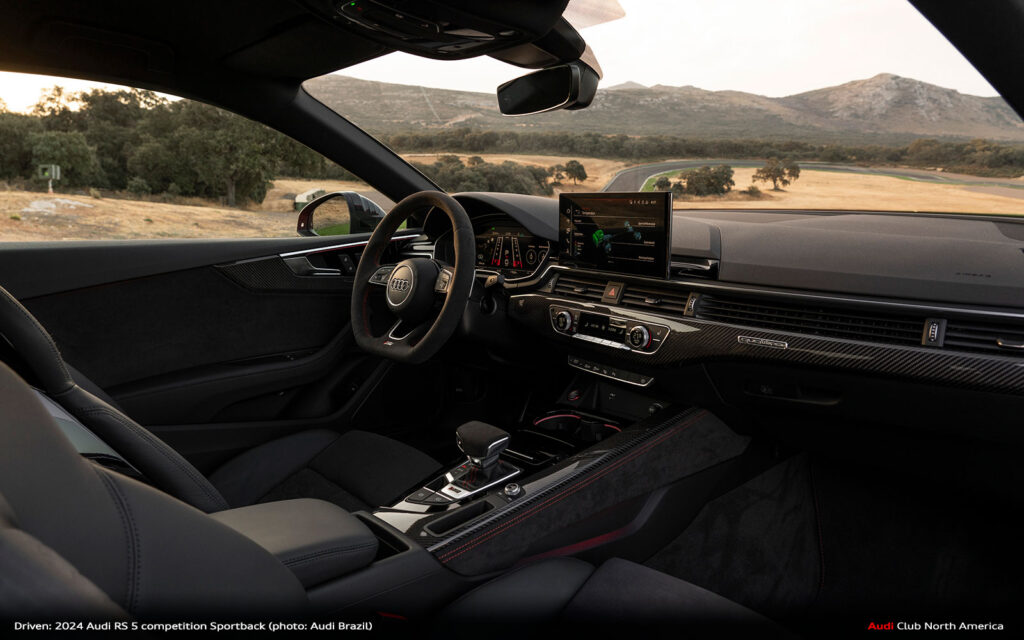
Some purists will complain that the RS 5 isn’t an Avant. Unlike the RS 6 that came here in the most recent generation, Audi has yet to bring the equivalent RS 4 Avant to the U.S. market. For now, Audi’s B-segment RS-car is Coupé and Sportback only, though we’d argue here again the Sportback has a Goldilocks draw to it. Its 4-door coupe-like form is more sporting GT than long roof, though its hatchback rear access (the Coupé has a notchback trunk) gives you nearly all the same accessibility and storage capacity of the RS 4 Avant… at least when measured below the beltline. It’s also over two-inches longer than the Coupé and basically identical to the RS 4 Avant, a fact that makes the Coupé the more agile of the pair while the Sportback the more utilitarian. Overall, the Sportback is both practical and more traditionally visually appealing to all… except perhaps the longroof aficionados.
Since it first launched in the USA in 2018, the B9-generation RS 5 took a decidedly more composed approach to the B-segment RS-car. It dropped the high-revving V8 of the B8 generation for a Porsche-developed 2.9-liter biturbo. And while both faster and lighter in the nose than its predecessor, it was decidedly less rowdy.
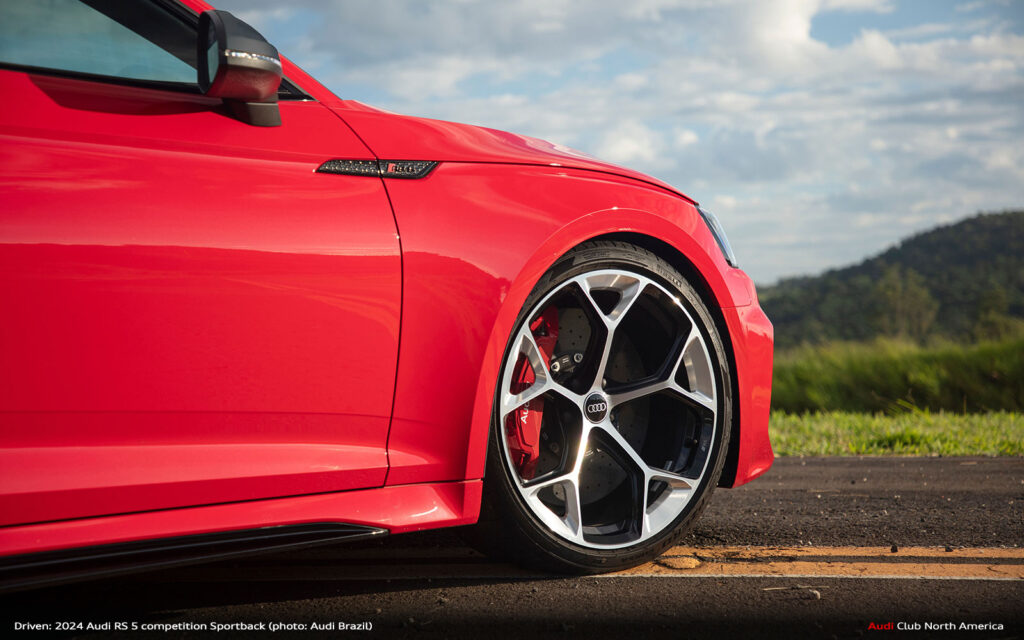
Last year, Audi introduced the competition package, a serious upgrade for the RS 5 and one that raised the bar on scales of emotion and driving purity. Competition package cars are most easily spotted due to their unique milled-cut 20-inch 5-Y spoke design wheels, a design shared with the RS 6 and RS 7 performance, and also a lower ride height thanks to factory-tuned adjustable coilovers. Other package equipment includes Pirelli P Zero Corsa tires, 180 mph top speed (on track), a non-variable steering rack, larger diameter sway bars at both front and rear, RS Sport exhaust system with matte black tailpipes, red brake calipers, RS carbon matte accents both inside and outside, black optics exterior trim including badges, Pearl Nappa leather seats with Dinamica suede-like centers, seatbelts with red edging, RS logos stitched into floor mats and seats, red Rhombus design puddle lights and Alcantara on the steering wheel, shift lever and center console.
In 2023, the American Competition package included front carbon ceramic brakes and cost about $16,000. Canada’s Competition package went with standard steel brakes and cost about $10,000. For 2025, Audi of America removed the carbon ceramic brakes, dropping the package as tested to $10,300.
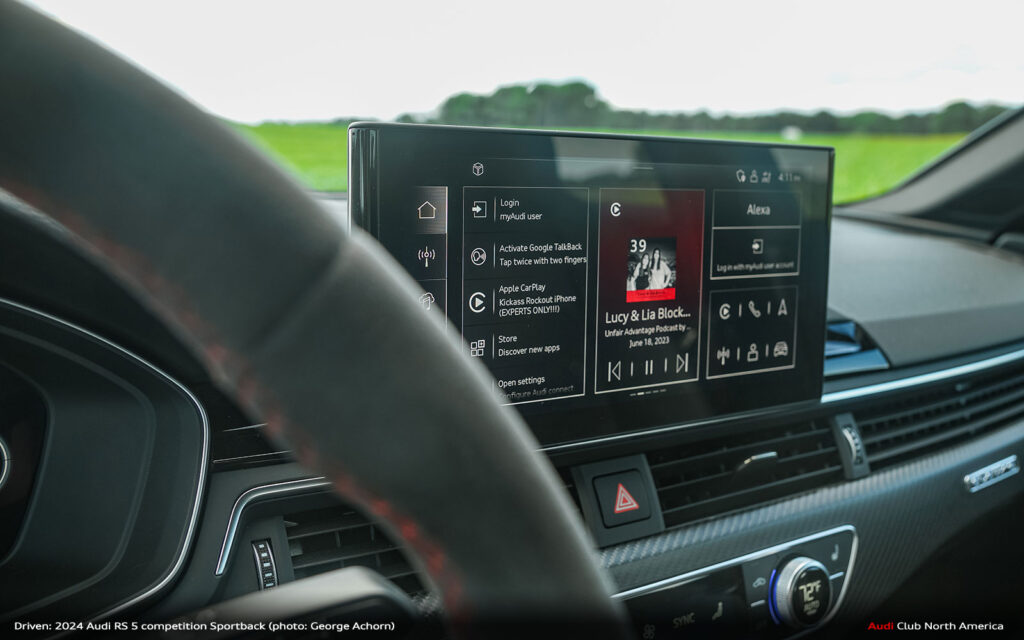
Our Sebring Black test car’s window sticker had a few more options. These included the Navigation package ($1,450) with Audi connect app functionality, the Side assist package ($500) with pre-sense rear and side assist hardware, and finally RS driver assistance package ($1,500) featuring adaptive cruise control with traffic jam assist, active lane assist, hands-on detection on the steering wheel, head-up display, park assist with parking entry functionality, top view camera and traffic sign recognition. Tally it all up and the car’s MSRP was $94,840.
That the RS 5 was already a well-positioned platform ripe for a true driver’s option group like the Competition package was probably already a foregone conclusion. The RS 5’s potent drivetrain, or subtly flared fenders with their 90 IMSA GTO-inspired back (and front) of flare venting make the car’s already low body and greenhouse profile even more pronounced. Now add in ride height that’s been lowered about 8/10ths of an inch and it really transforms the presence of the RS 5, making it notably more aggressive.
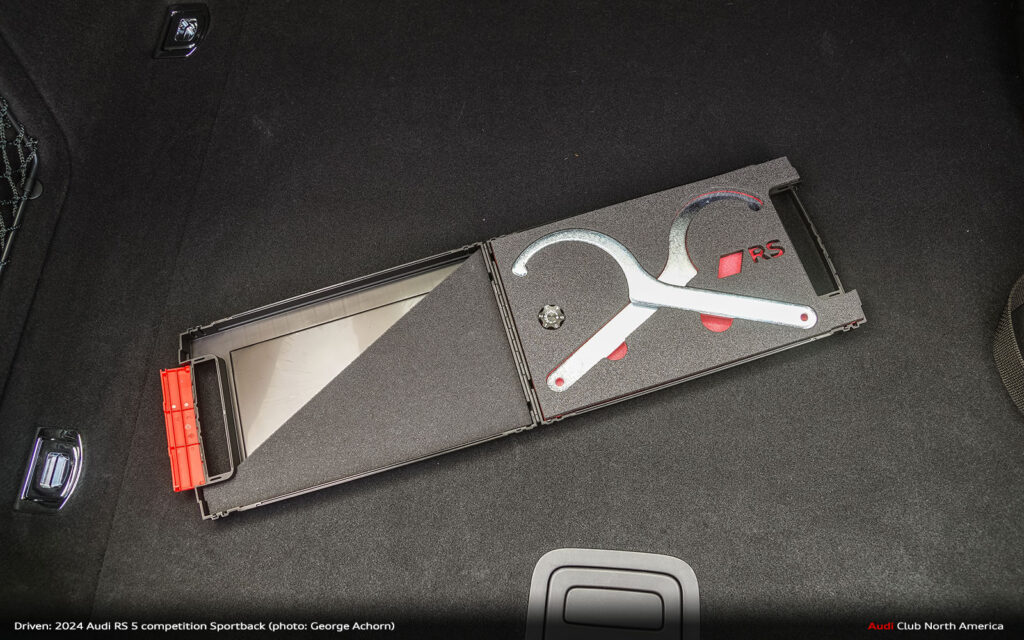
Appearance isn’t the only thing that’s more aggressive. The chassis and drivetrain also benefit. Most notable is the three-way adjustable coilovers. A set of supplied tools in the trunk allow you to independently adjust height, high-speed and low-speed compression, and also rebound. And while you won’t be adjusting these on the fly via a button on the dash, the technical nature and utter capability of this suspension mean you can tailor your ride to be loose for potholes quick compression, slow for low speed so less weight transfer in curves, and with sharper turn in.
Other chassis improvements are worth noting. Those bi-color wheels are 4.4 lbs. lighter per corner, making a big difference in unsprung weight. Sport sway bars have been added, and Audi dropped the variable ratio steering for a fixed ratio rack that loads up better and is more accurate.
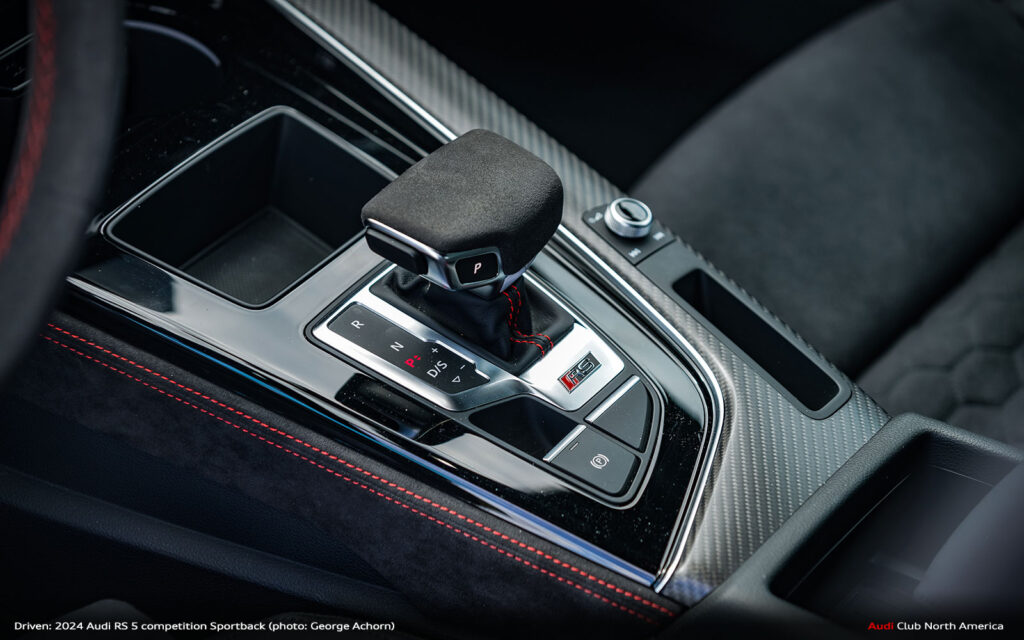
Recalibrated software further improves drivability. With the transmission, Comfort mode feels about the same, but Dynamic seems more aggressive, while manual mode has been changed to not force the upshift except 1-2 change during launch control so otherwise the engine will bounce off the rev limiter. At the rear, the Sport Differential gets updated programming, allowing for more aggressive torque vectoring so you can kick out the rear. The engine’s 444 hp power rating remains the same as the standard RS 5.
There are other changes attributable to further weight savings, though we’d argue they also aid in the visceral experience. Deleted sound deadening, primarily at the firewall, lets more engine note into the cabin. Audible engine sounds are further enhanced with the RS Sport exhaust and engine programming to augment off throttle exhaust pop and crackle.
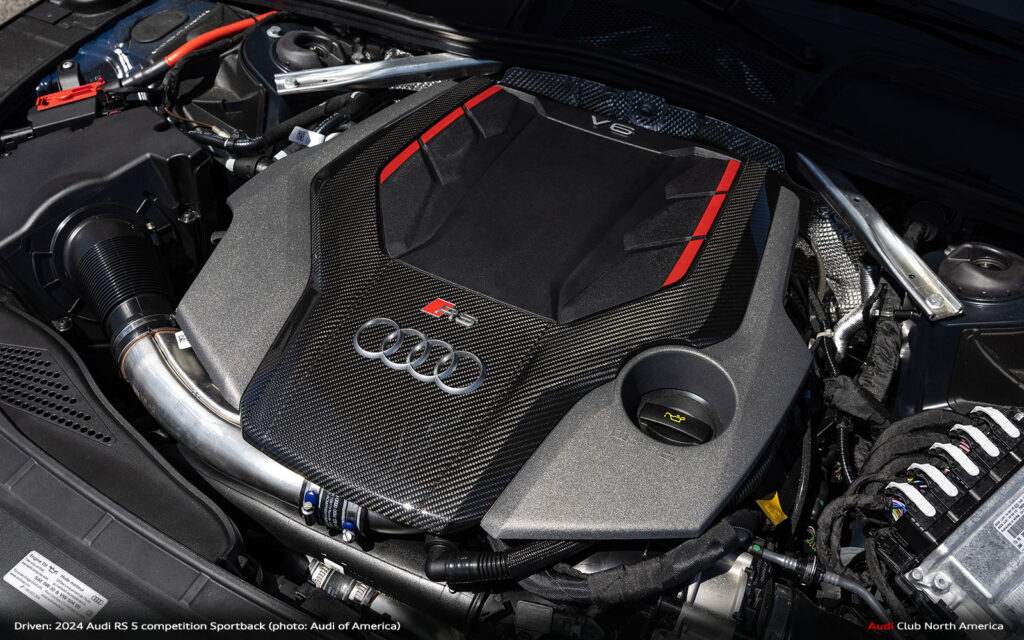
Inside, the more sporting cabin is also quite special. We haven’t seen this much synthetic suede in a very long time, and it’s definitely welcome here. The result is less chance of sliding around in the seat while cornering, not to mention grip on the wheel is improved. The cluster graphics and animation match the RS 6 / RS 7, while the updated MMI touch screen includes better management of both CarPlay and Audi functions at the same time by using framed windows. Subtle red accents offer a nod to Audi Sport racing colors, and the matte carbon trim is muted yet dials up the emphasis on performance and tech feel.
So how does it handle? Unlike the standard RS 5, it feels lighter even though the overall weight loss is modest. When you drive it hard, it is notably more fun than before. The ride is firmer, but not harsh. It rolls and pushes less… both very good things. Steering is more predictable, and so is manual mode throttle control as the transmission doesn’t force a shift mid-corner.

All things considered, the car is a more focused driving experience centered on sophistication and control. It’s not as rowdy as competitors like the M3. And while that’s typically the goal you find in an Audi that is also meant to serve duty as one of the most flexible of daily drivers, it still needs to be emphasized that the RS 5 competition is also an markedly credible choice for more experienced HPDE students who haven’t gone completely off the invest-in-a-full-on-track-car deep end. That it can do all this and haul most of what you’ll need for an HPDE, including tools and a set of wheels and track tires, also needs mentioning.
And whether you’re driving home from the grocery store with bags, or an HPDE with track day kit, there’s one more feature worth noting. Access to the massage function on the seats is now easier to activate with the touch of a lone distinct button on the side of the seat, then dialing it further on the touch screen. It is an odd bit of standout luxury and sophistication you don’t expect in a car with such a clear performance focus… and yet it’s most welcome after a long day or hard miles. It makes you wonder if Tom Kristensen could have used such a feature in his R18 on the Mulsanne Straight.
Wait a minute… Is Tom Kristensen Goldilocks?!?!
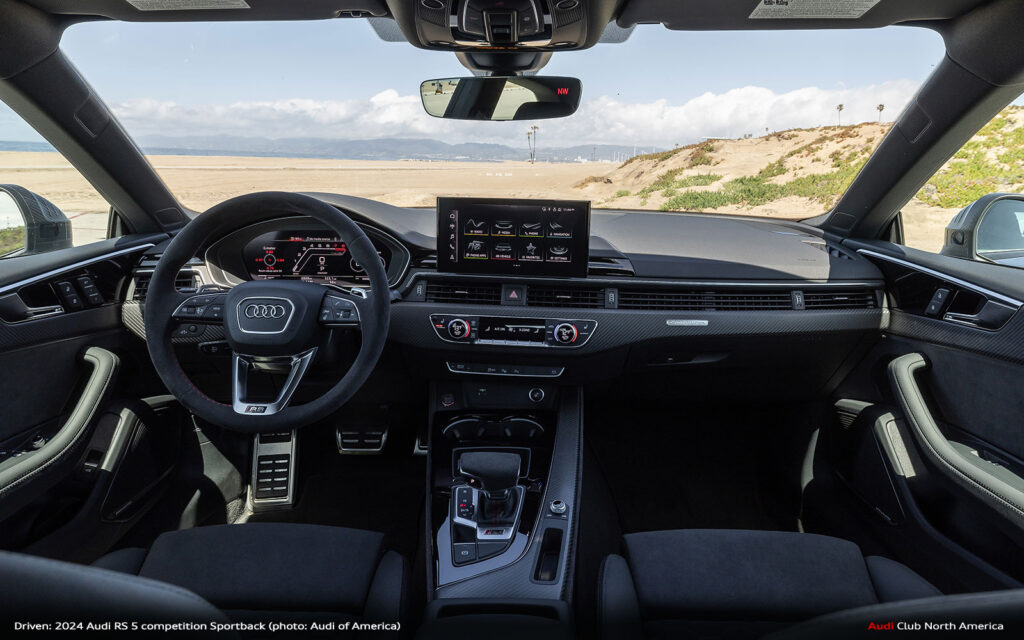

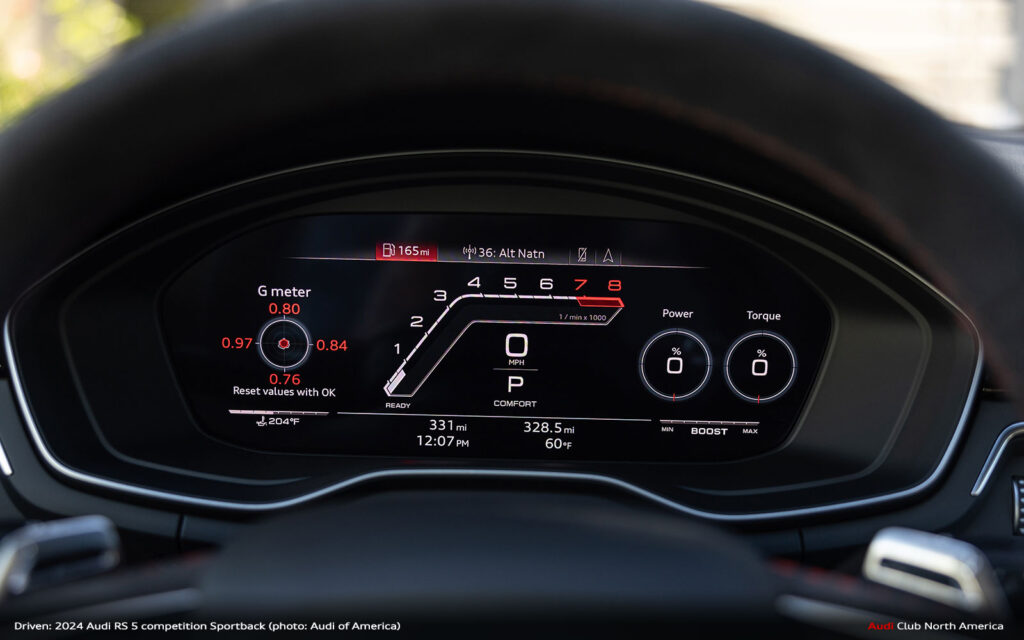
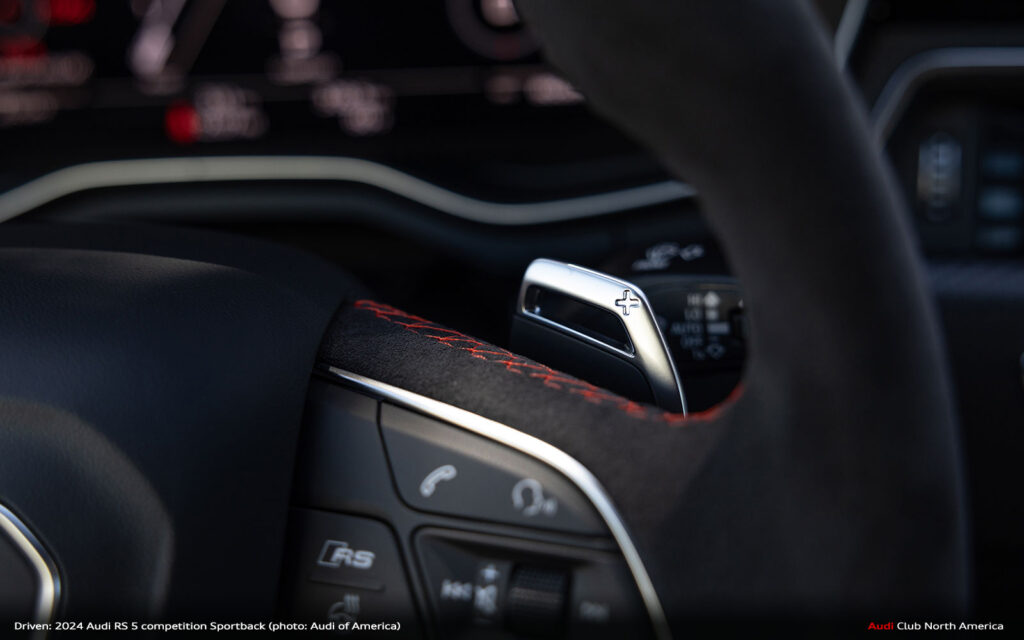
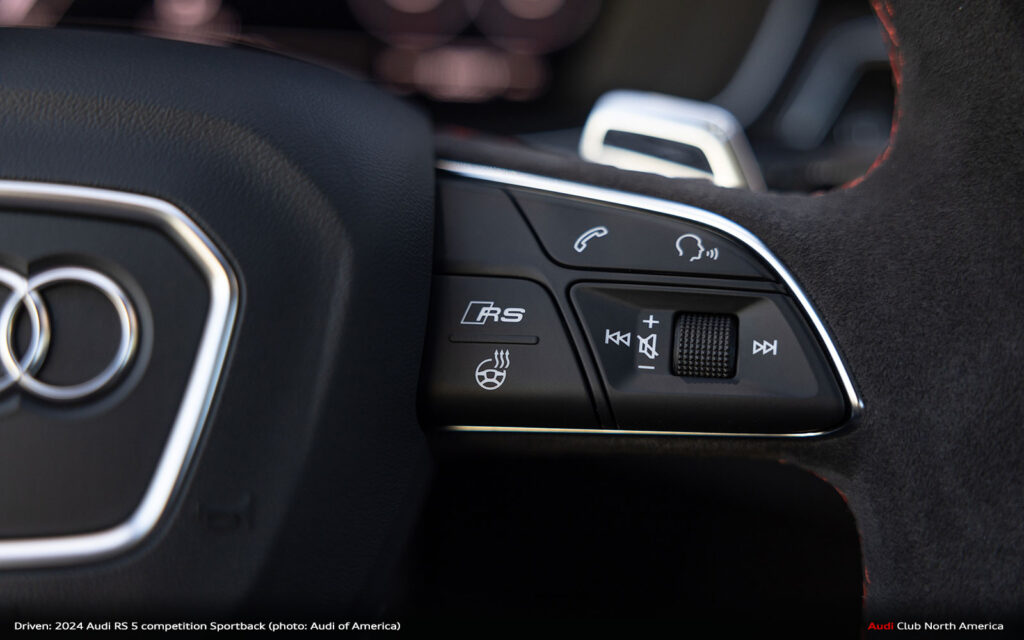
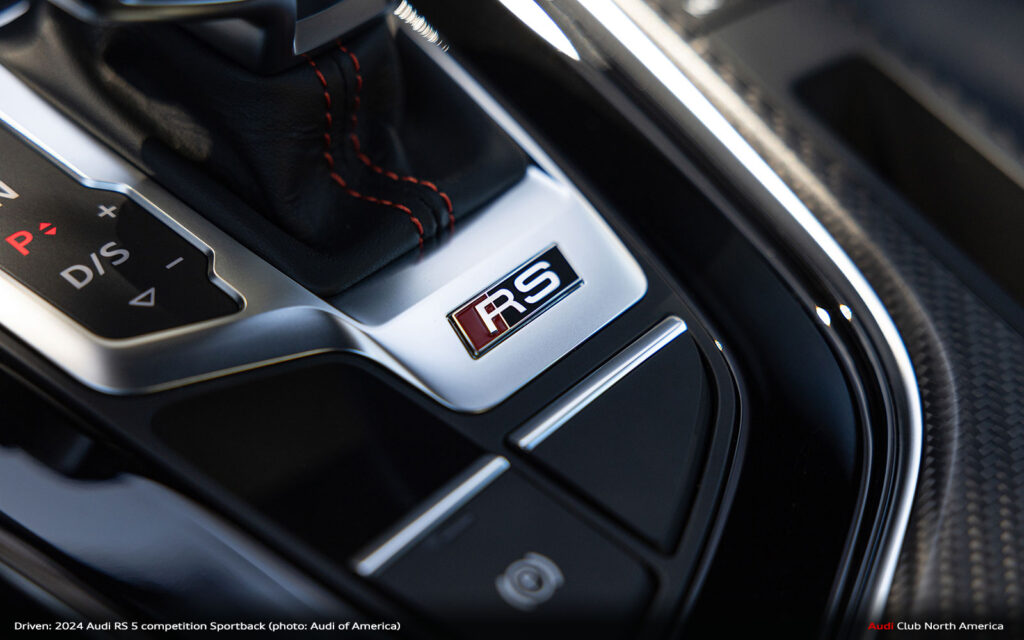
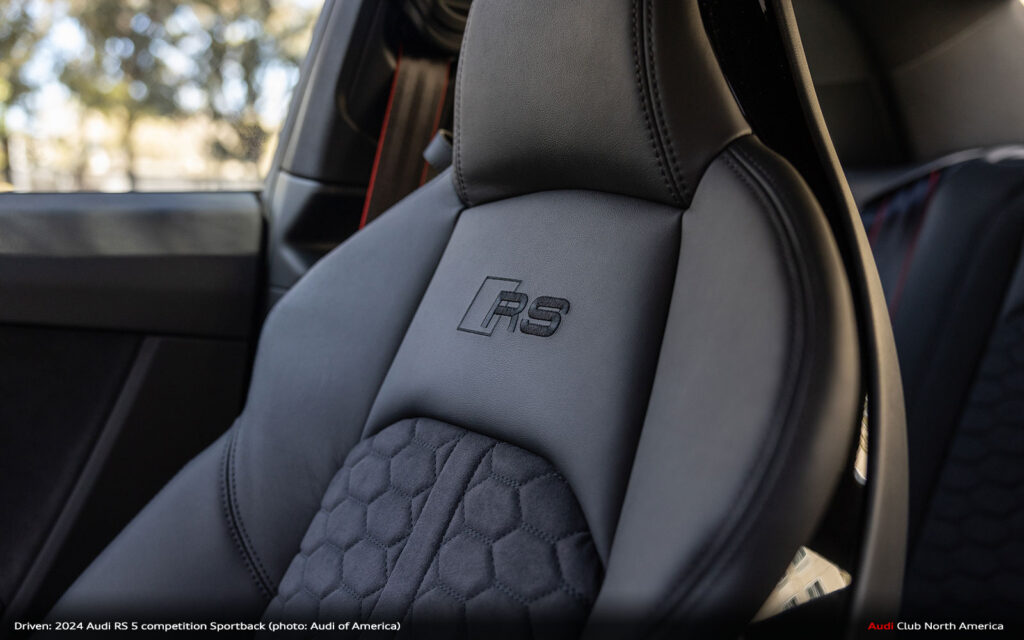
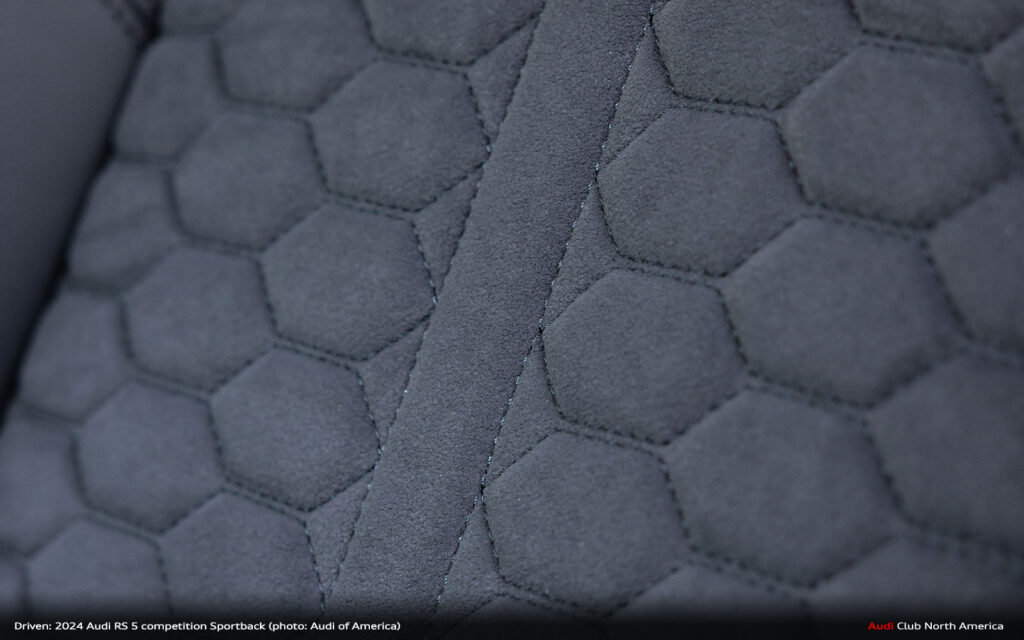
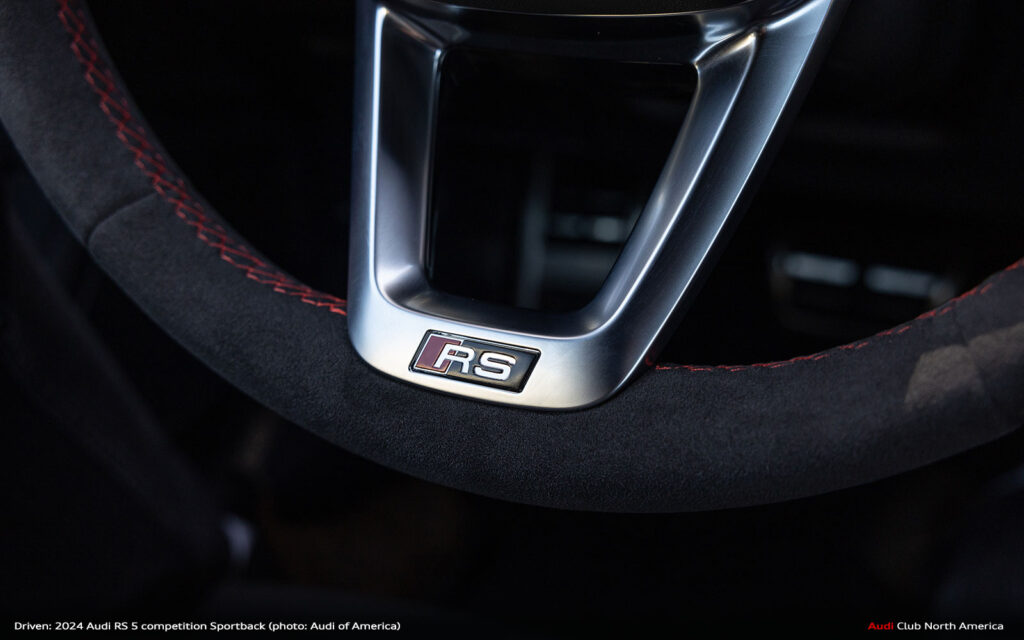
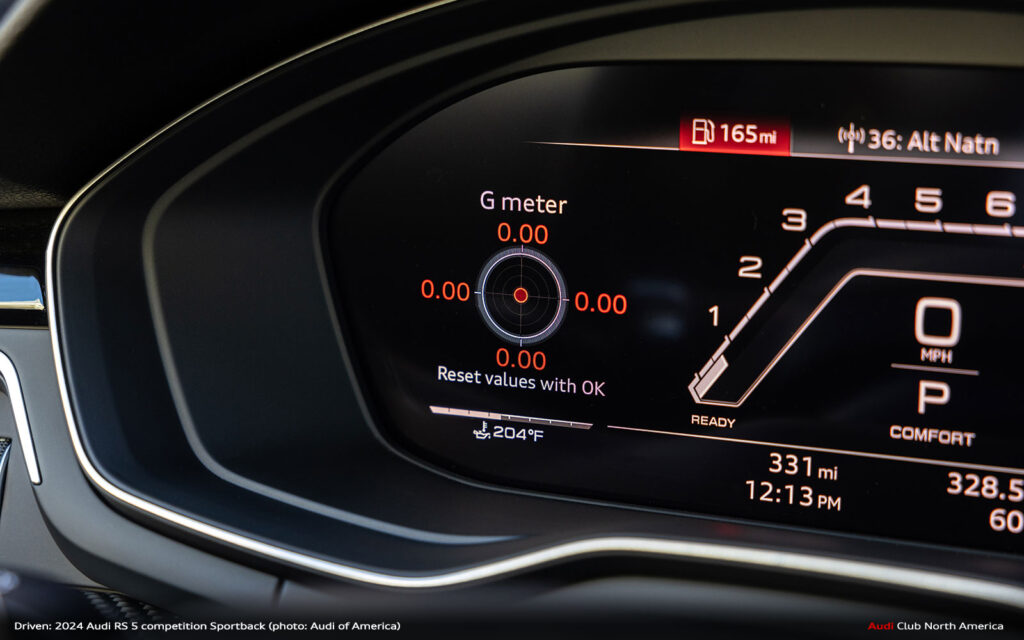
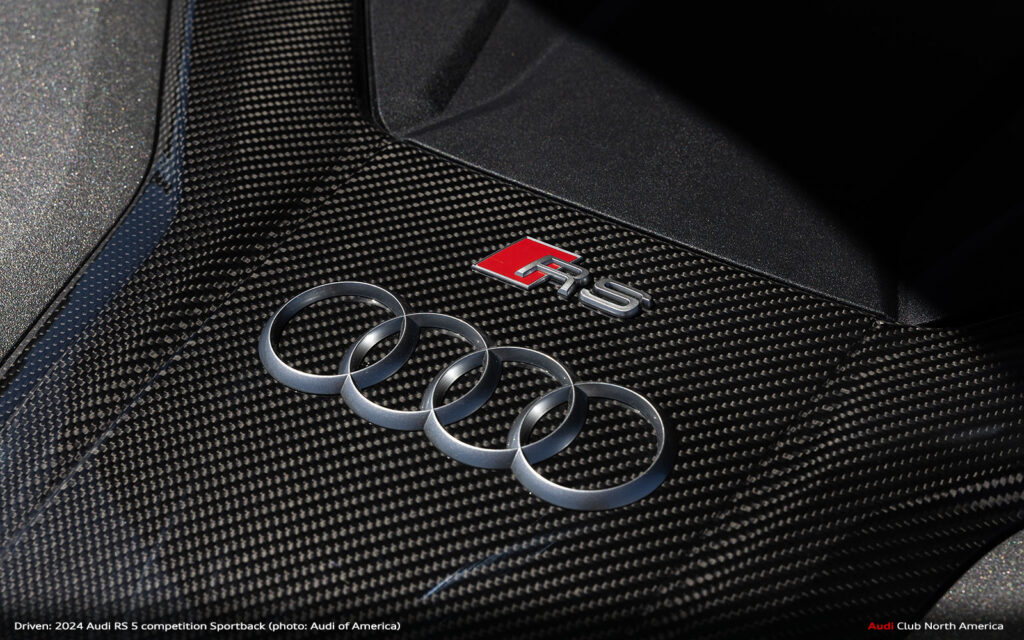

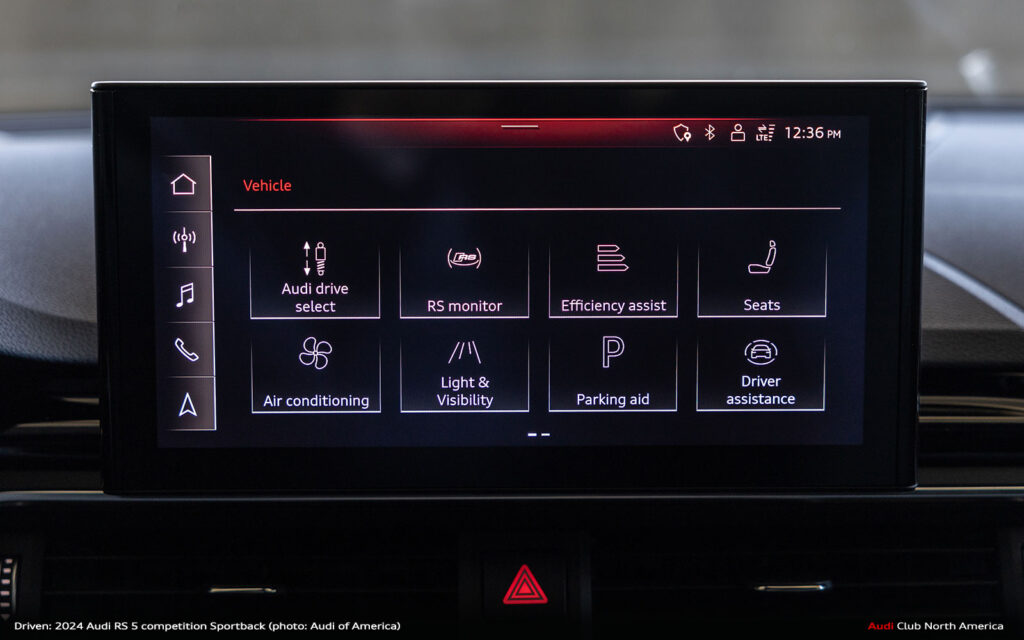
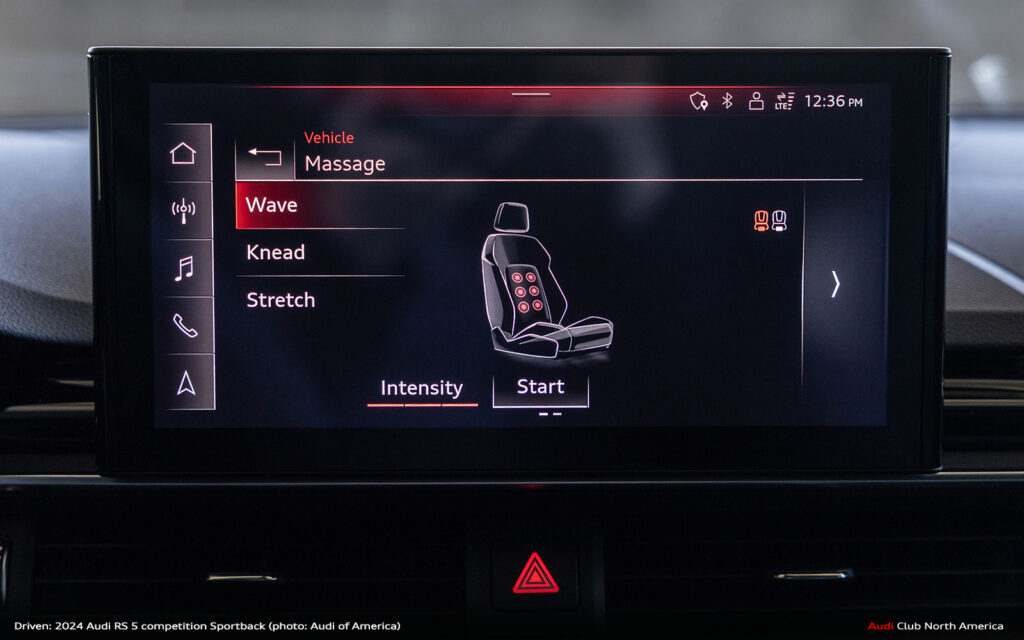

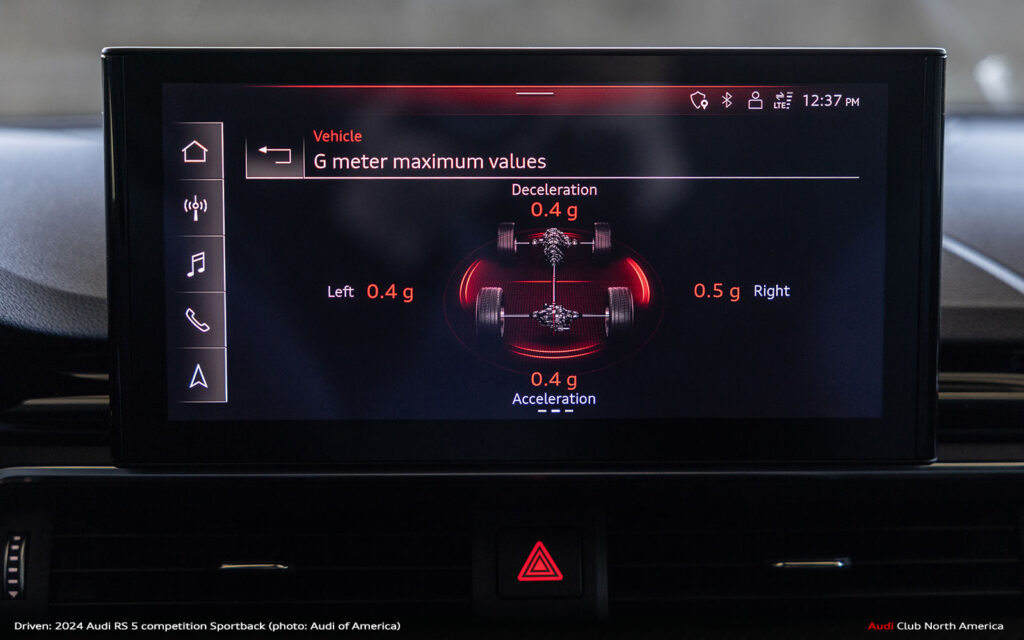


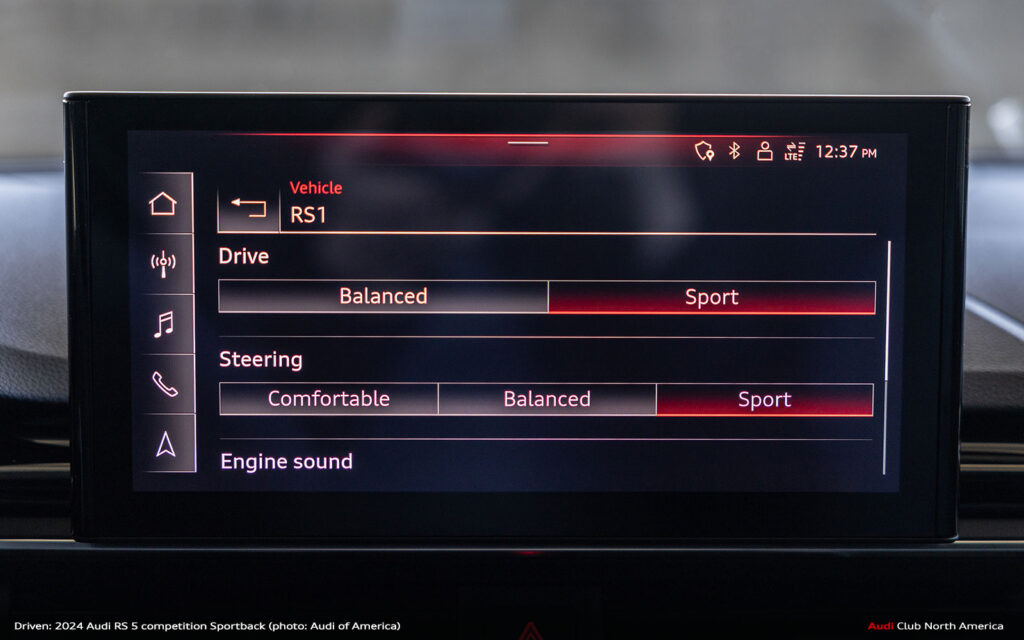
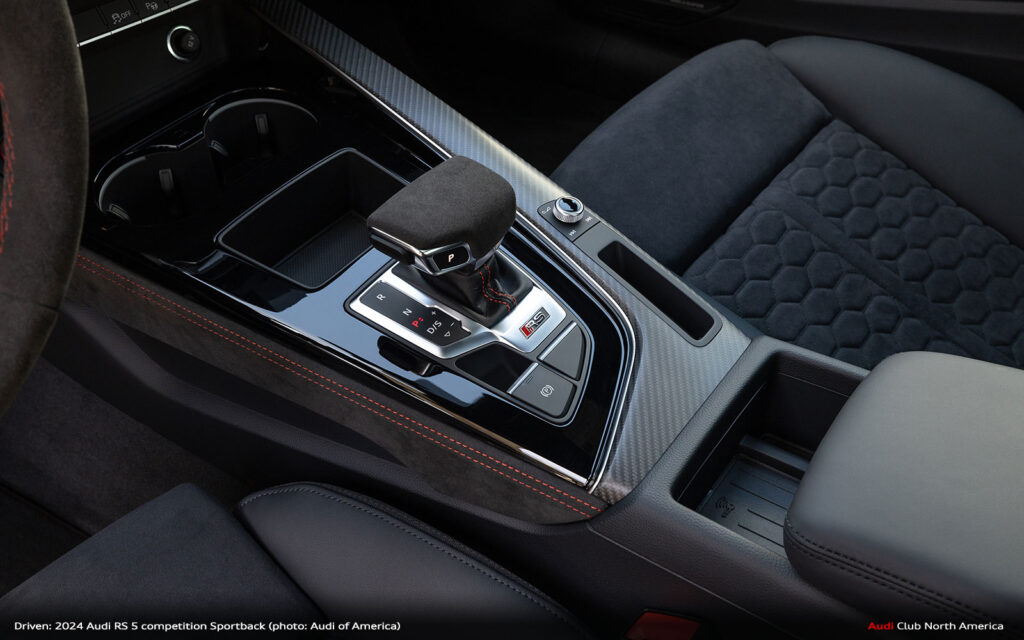
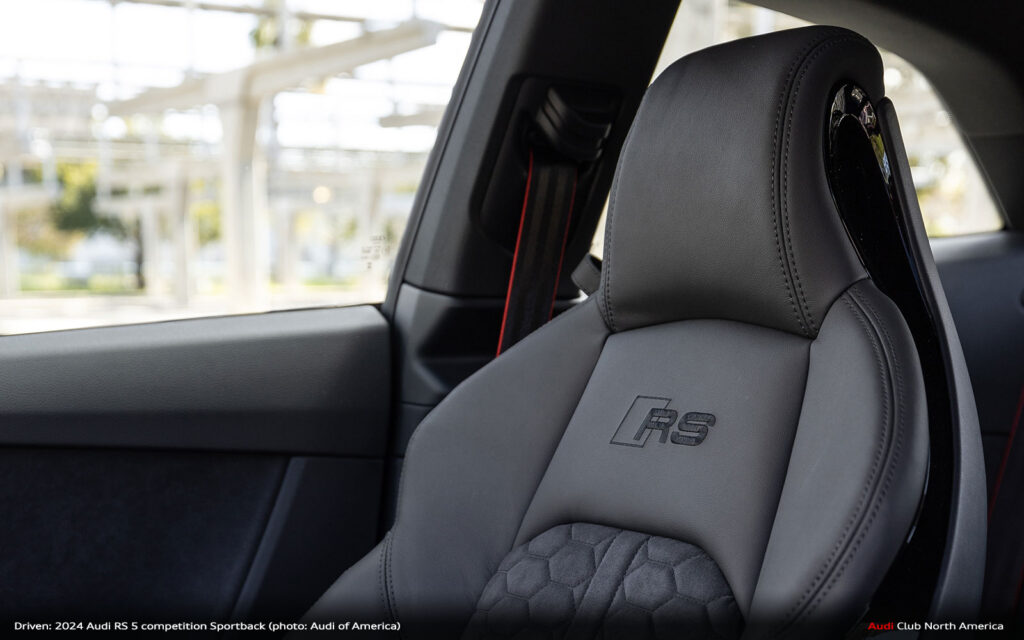

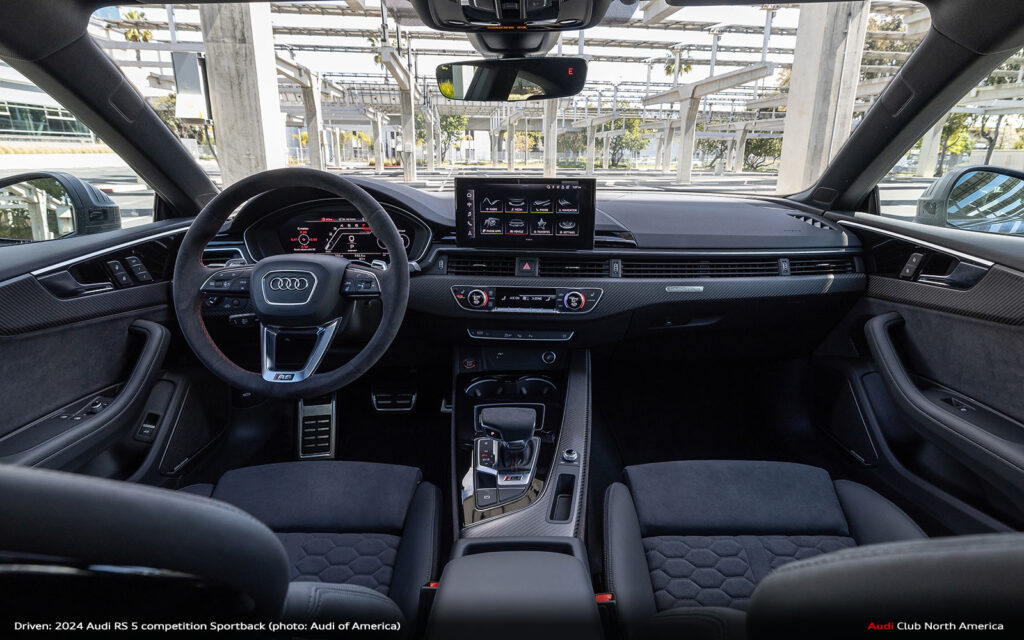

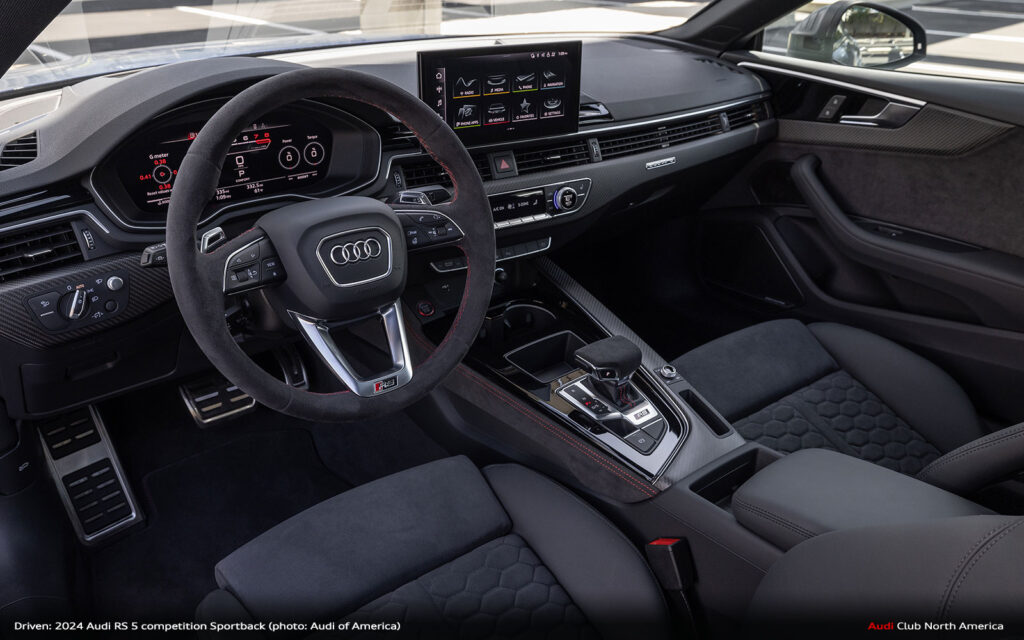
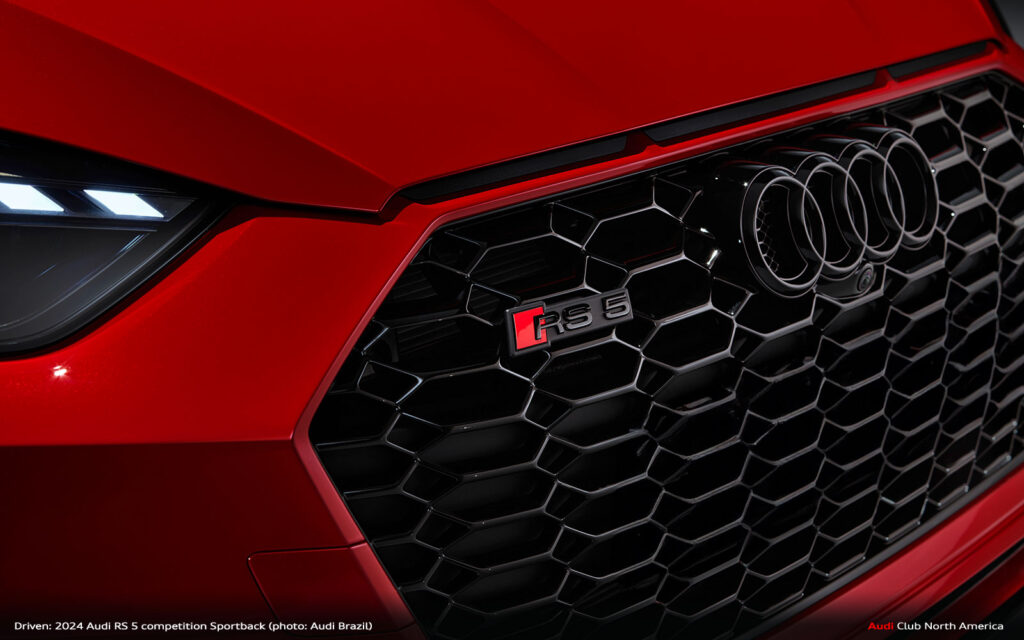


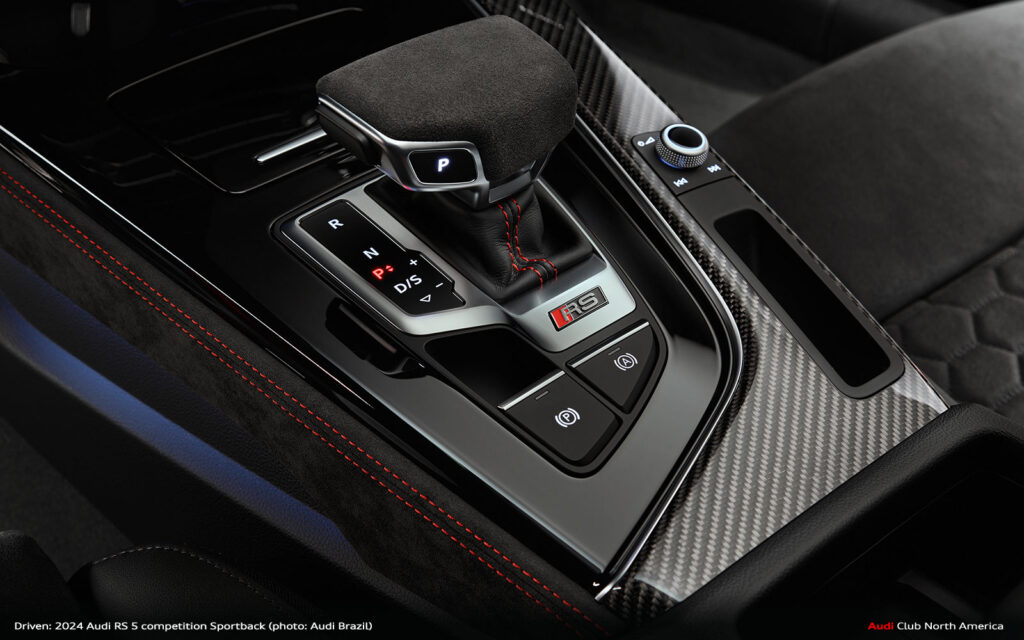
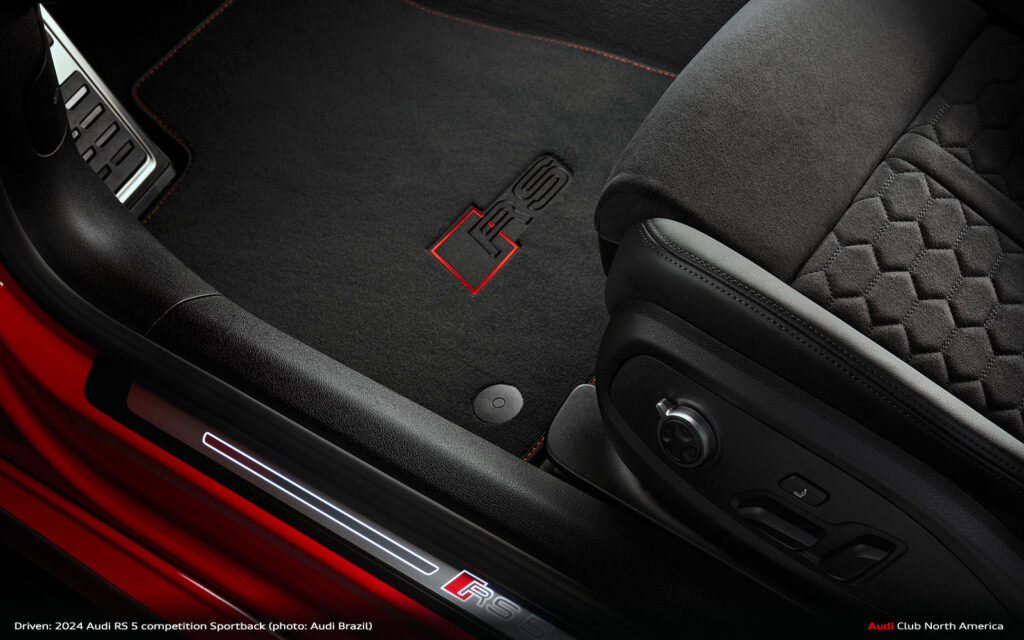
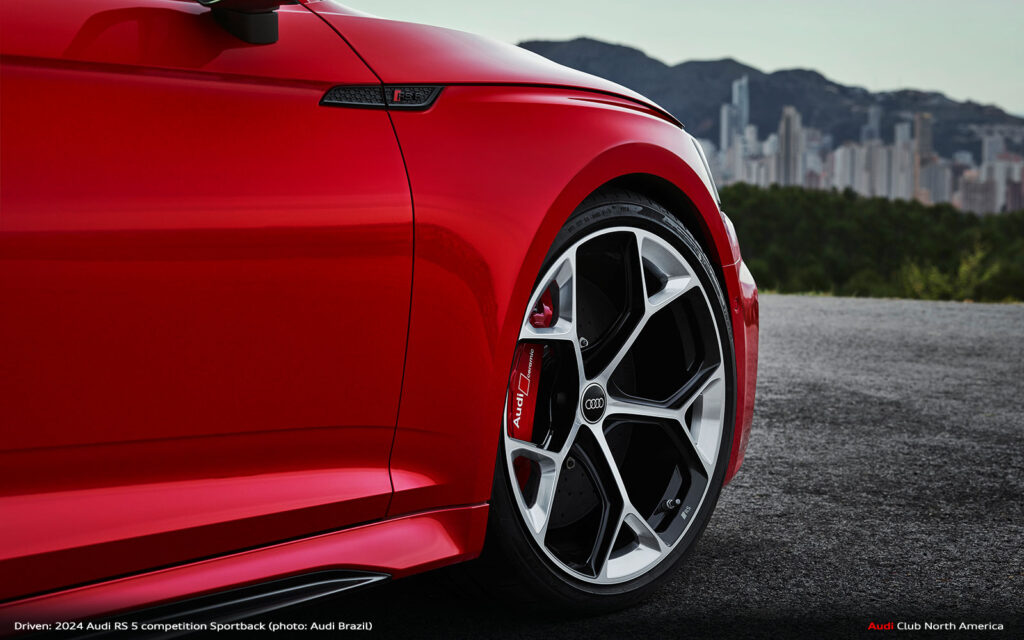
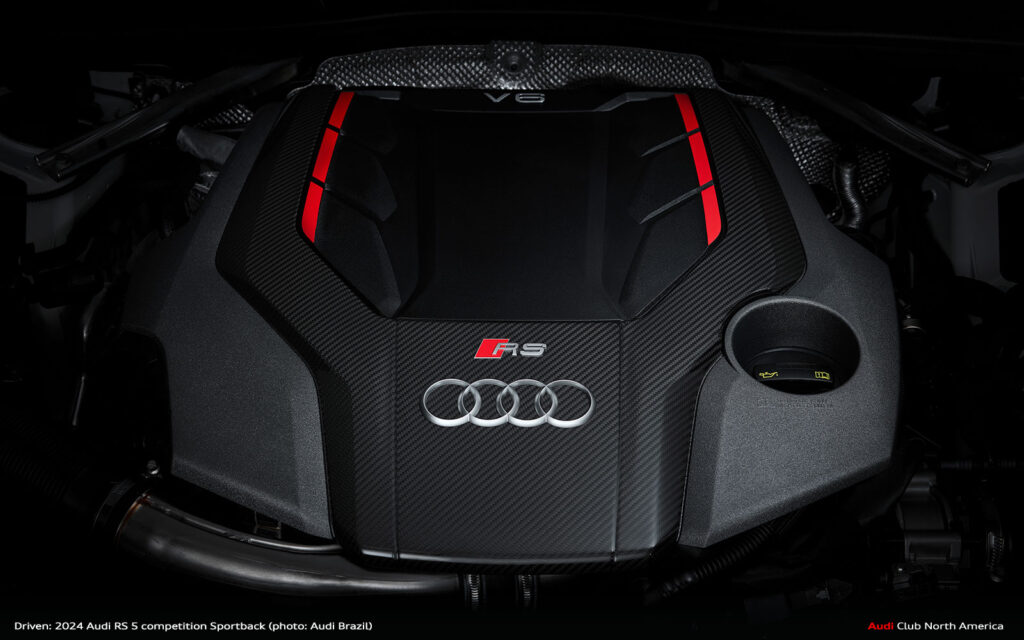
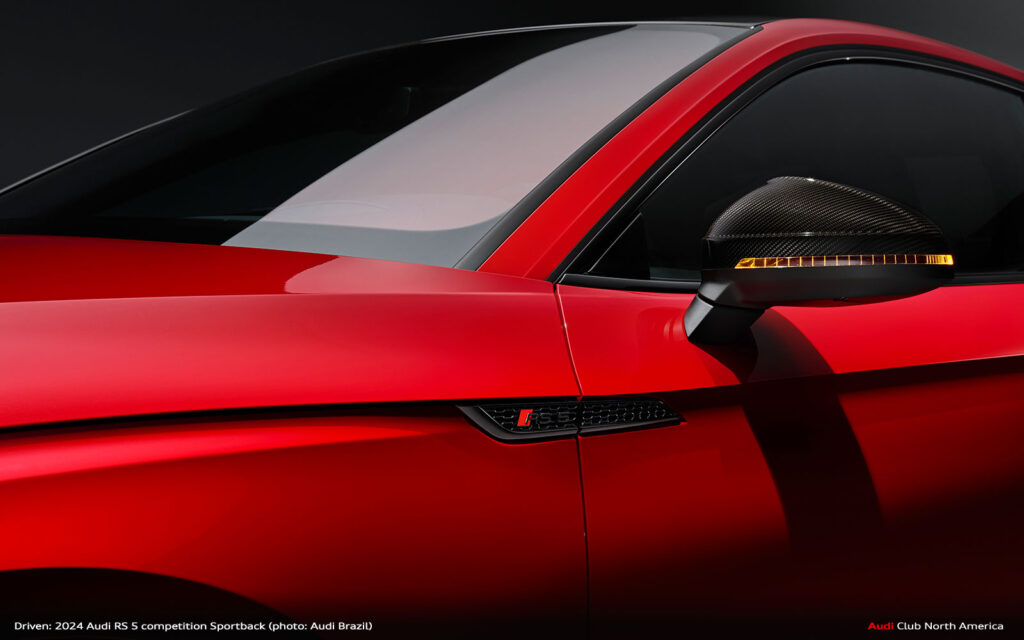

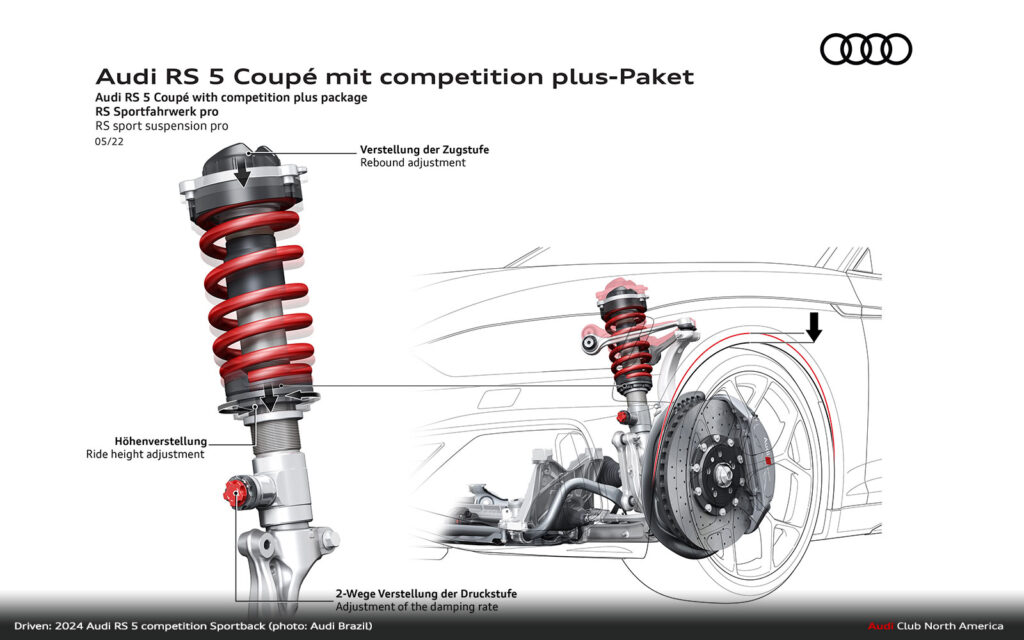



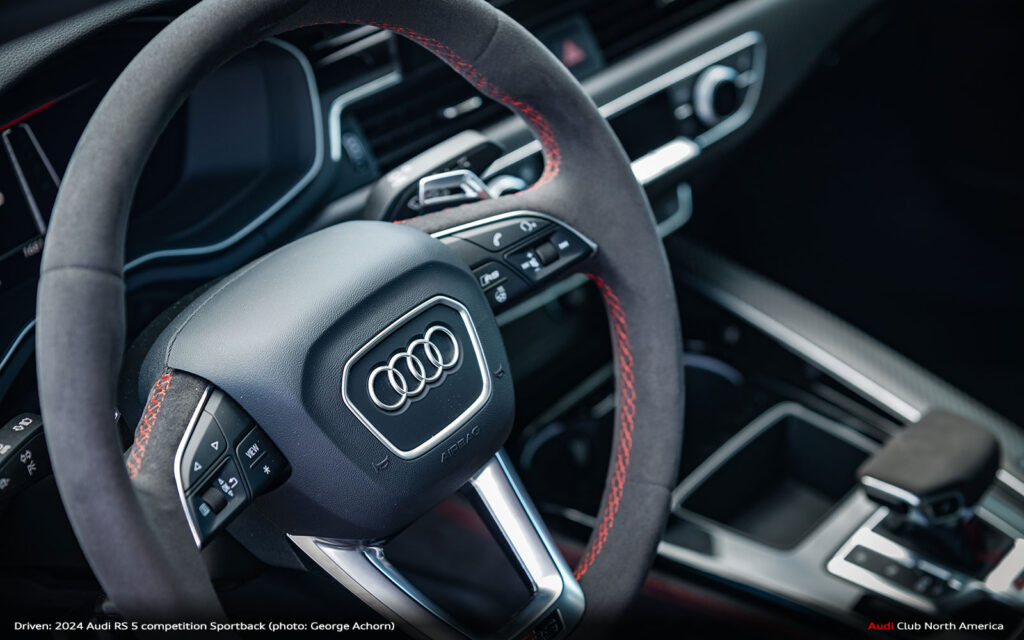


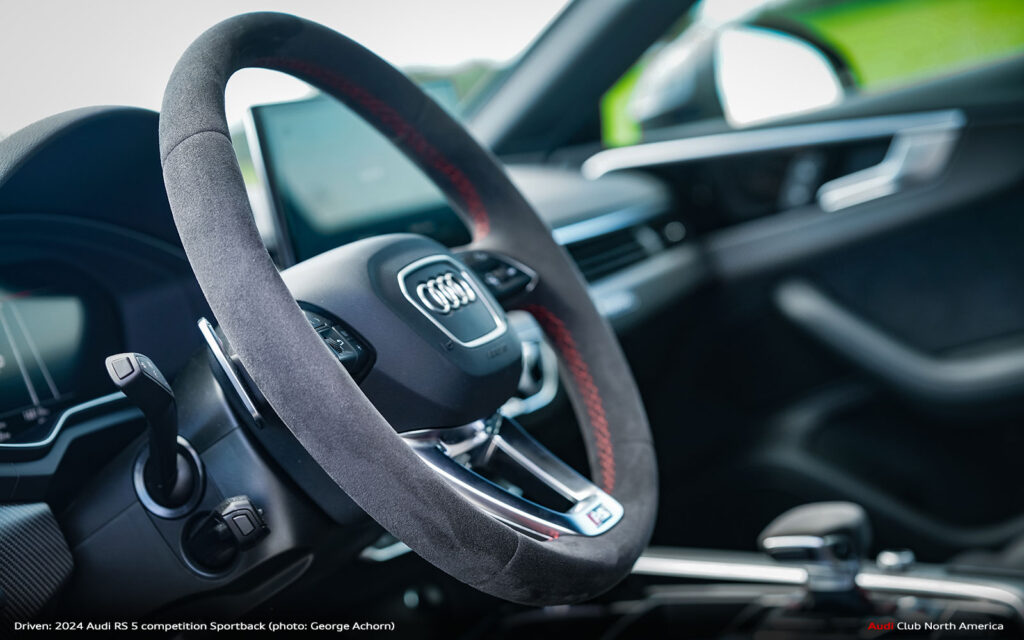
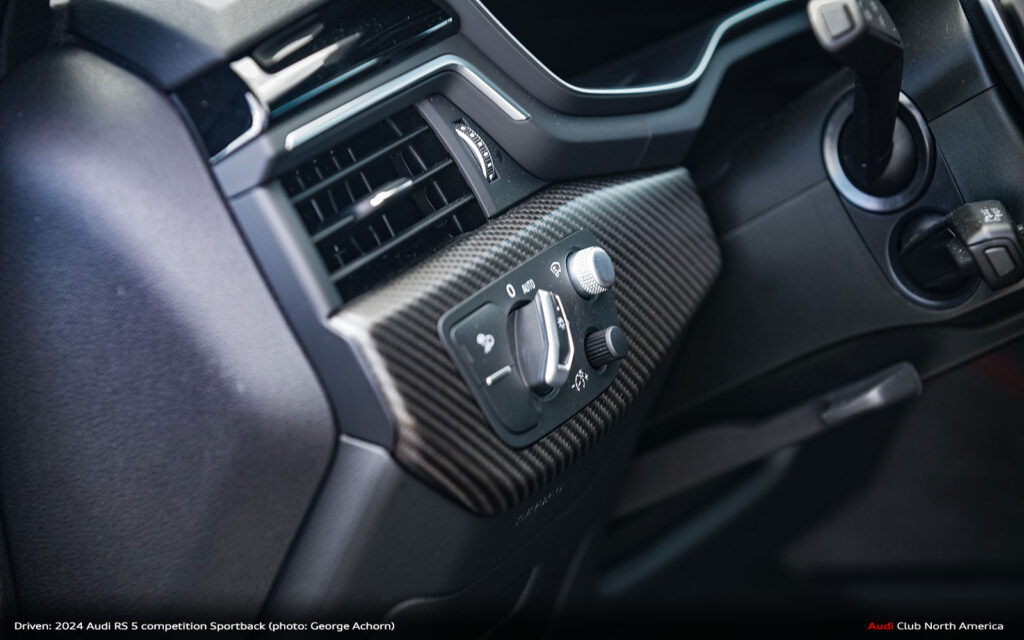
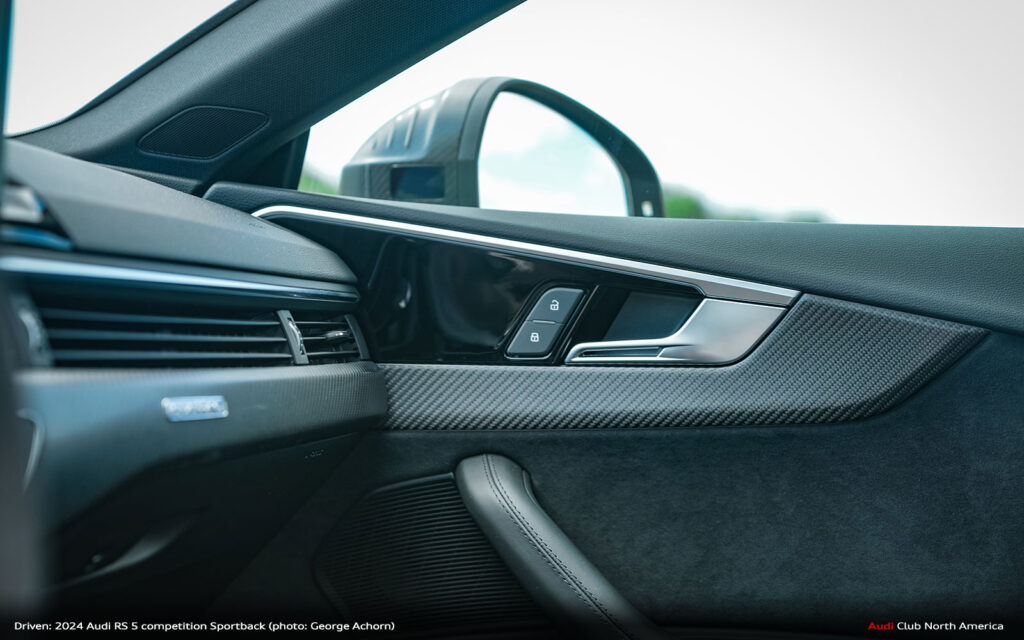

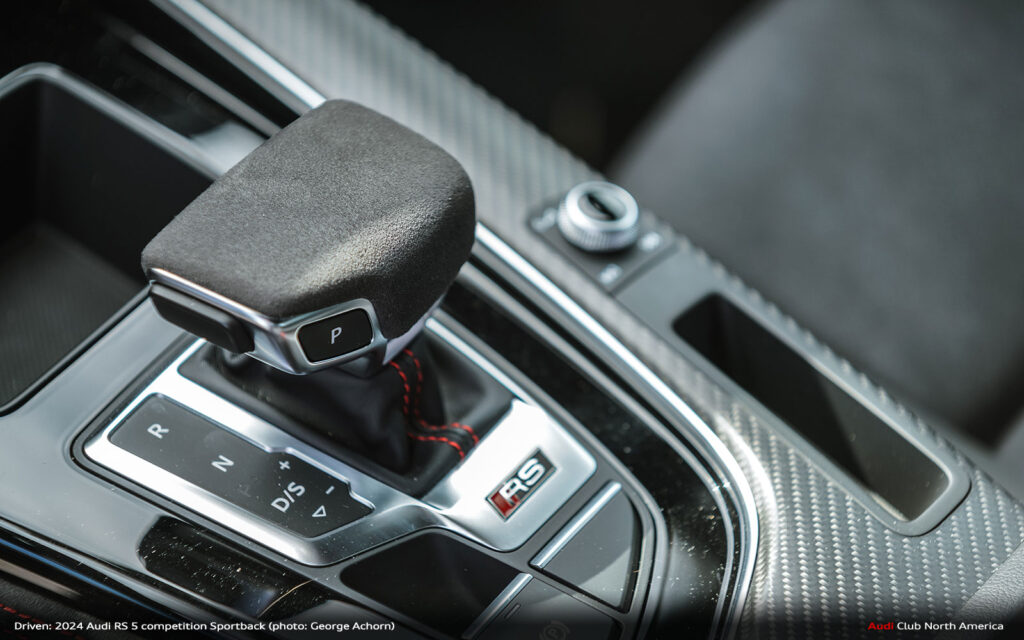

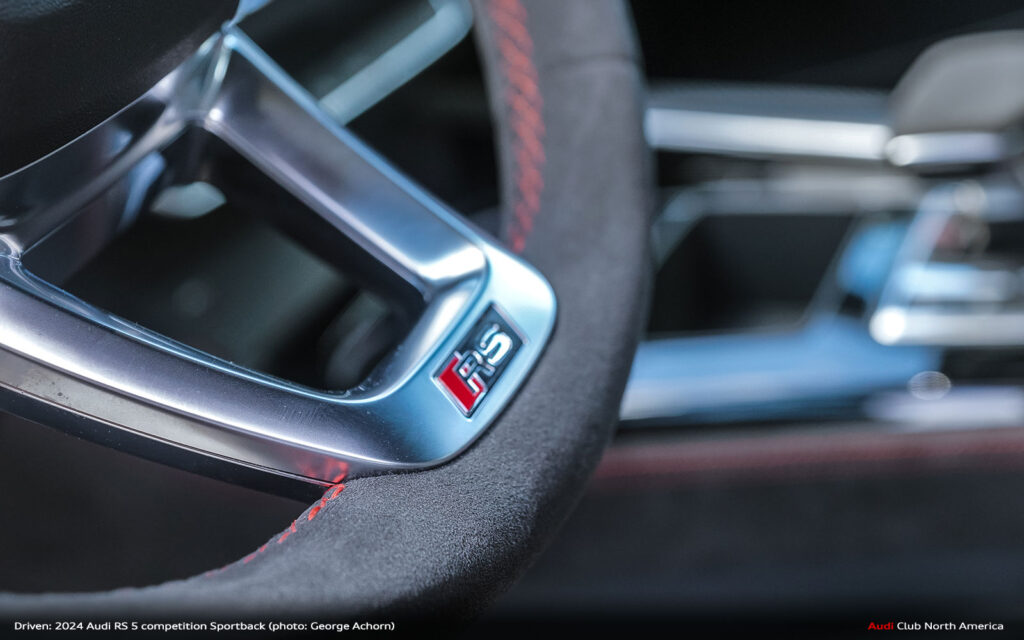
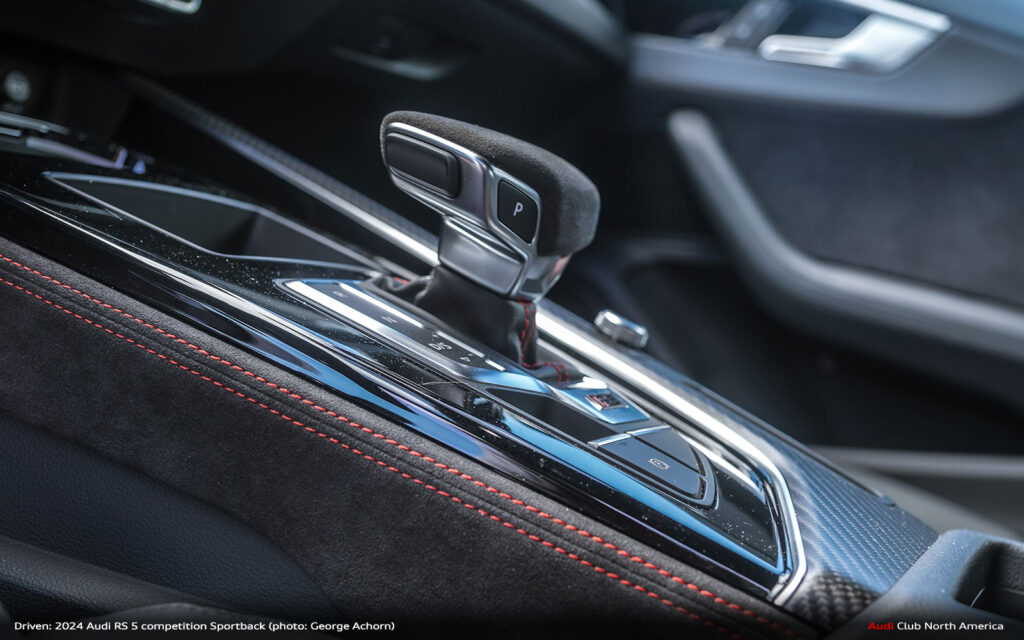

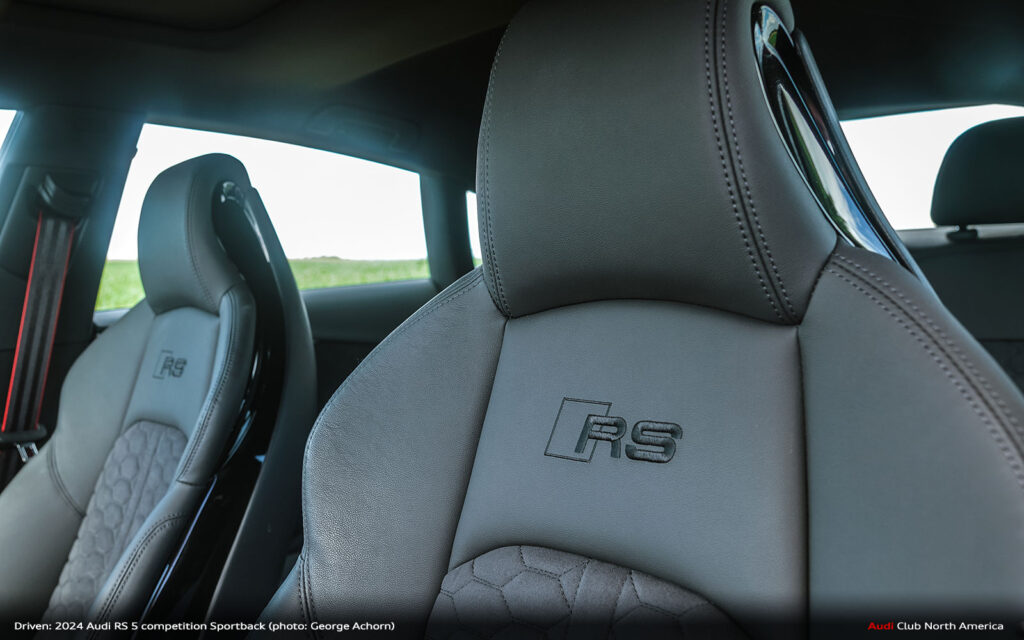
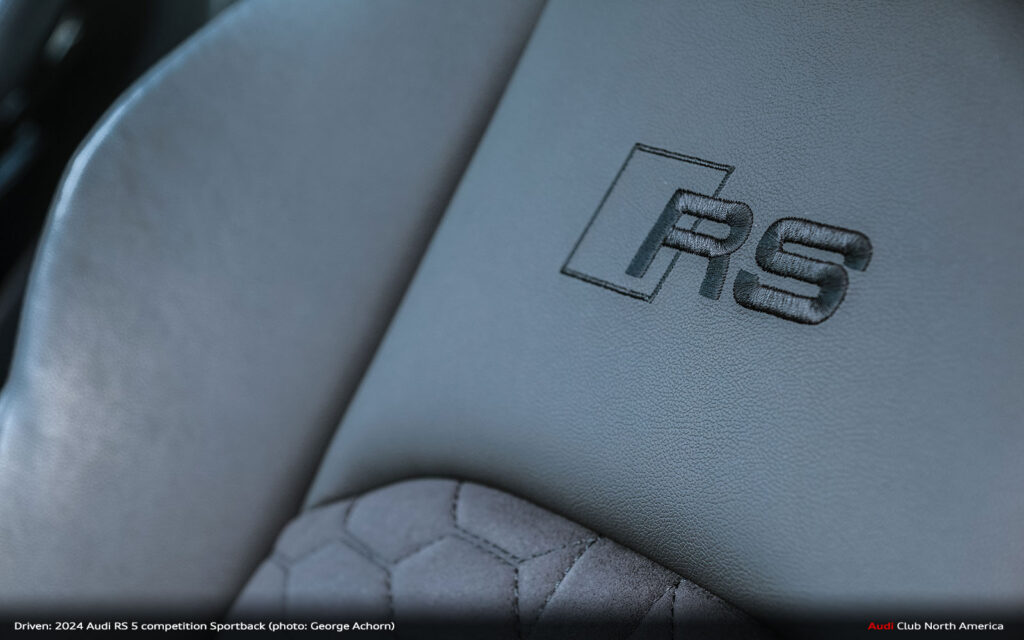
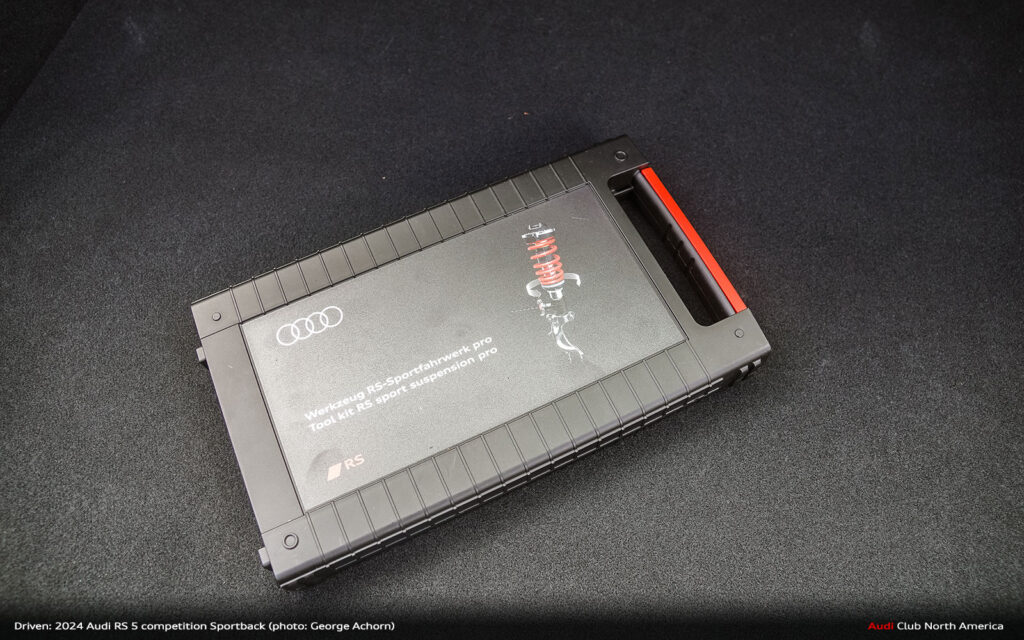


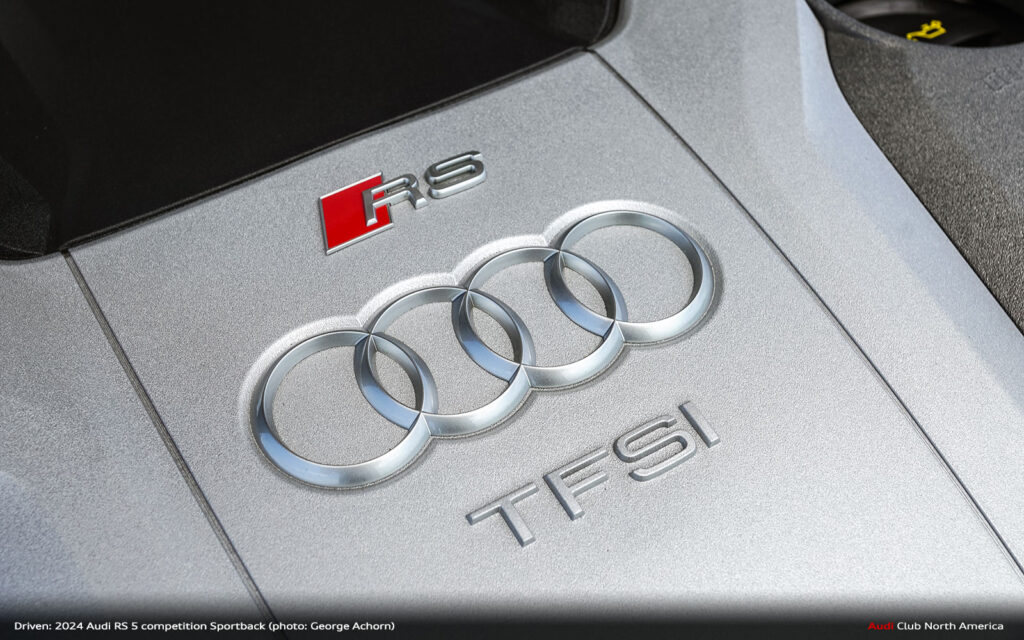


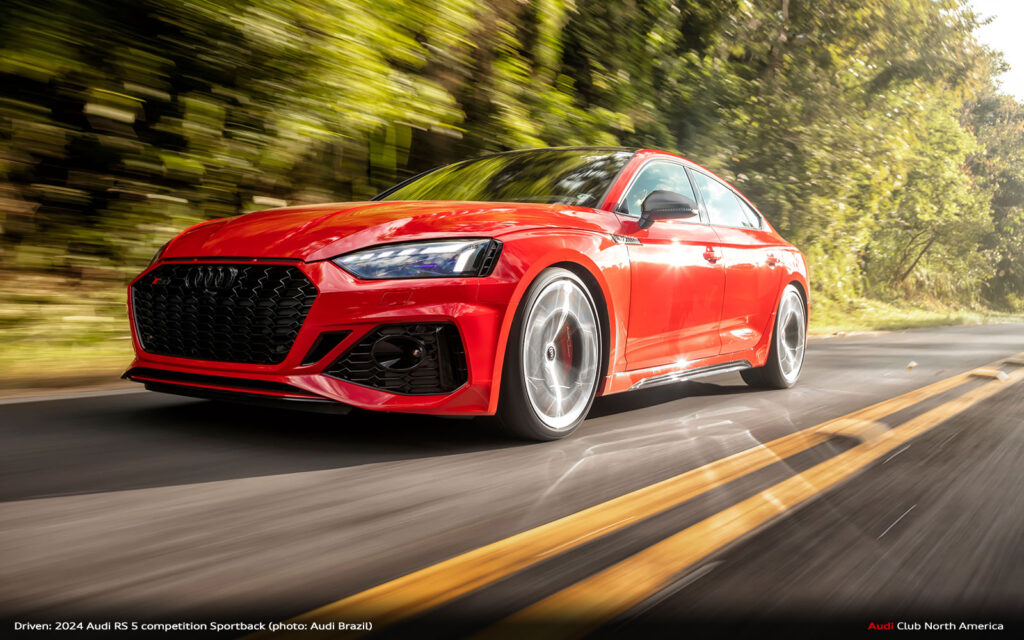




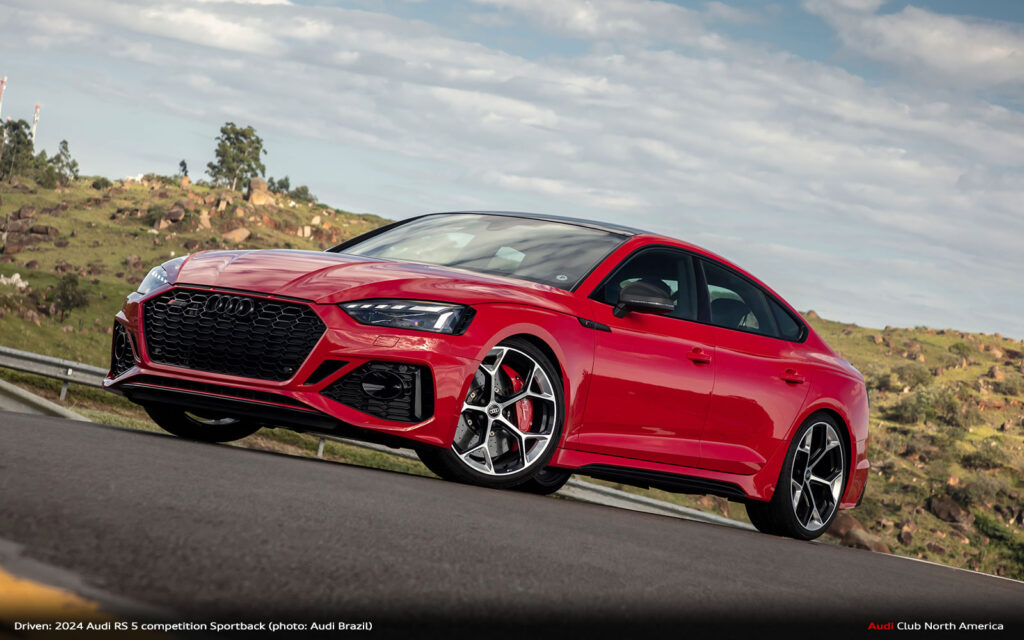

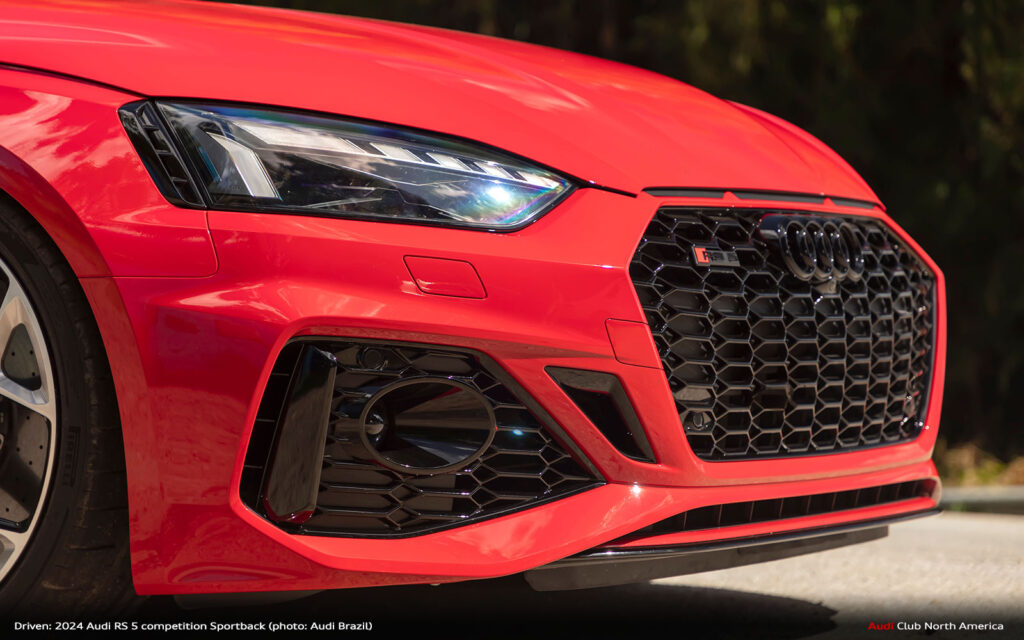

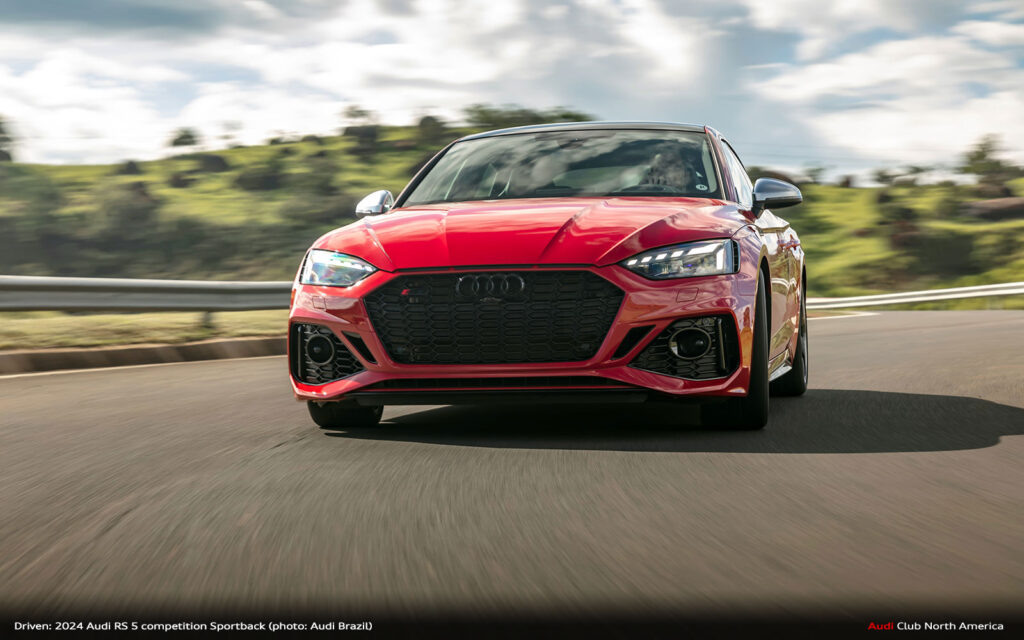


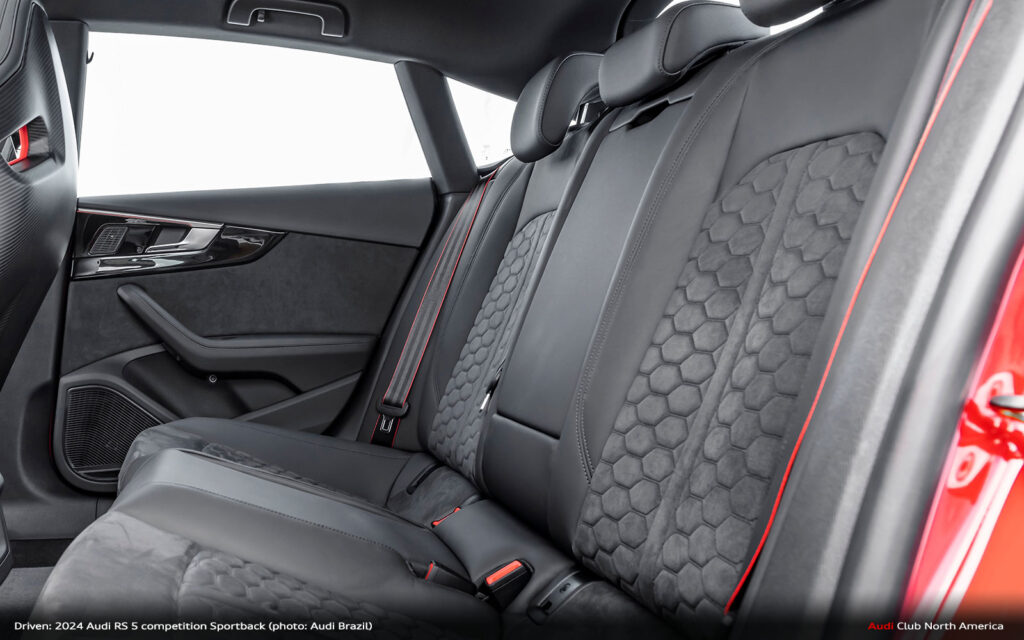

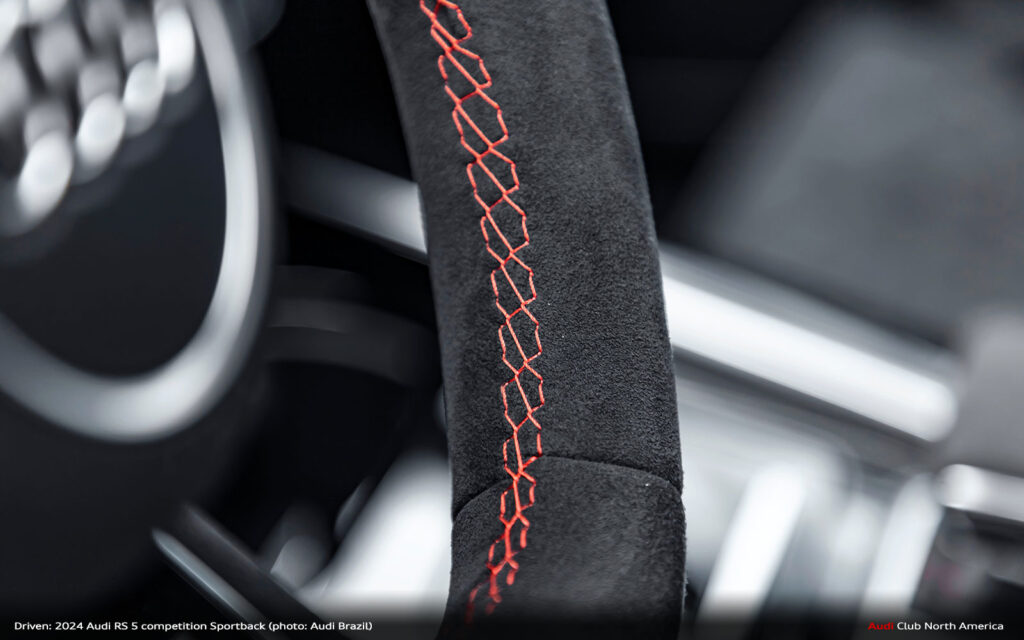
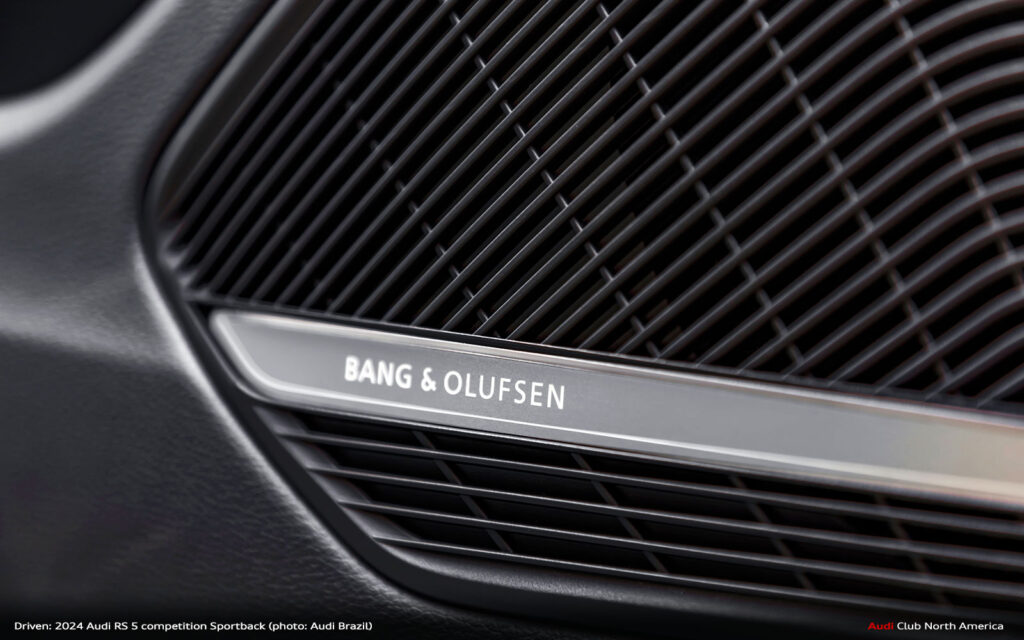
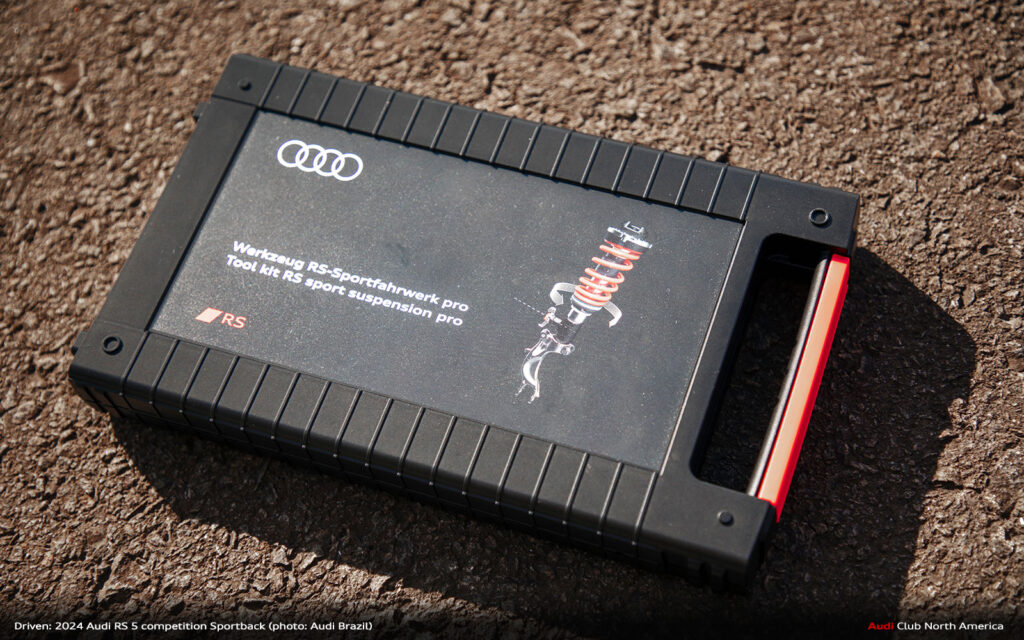



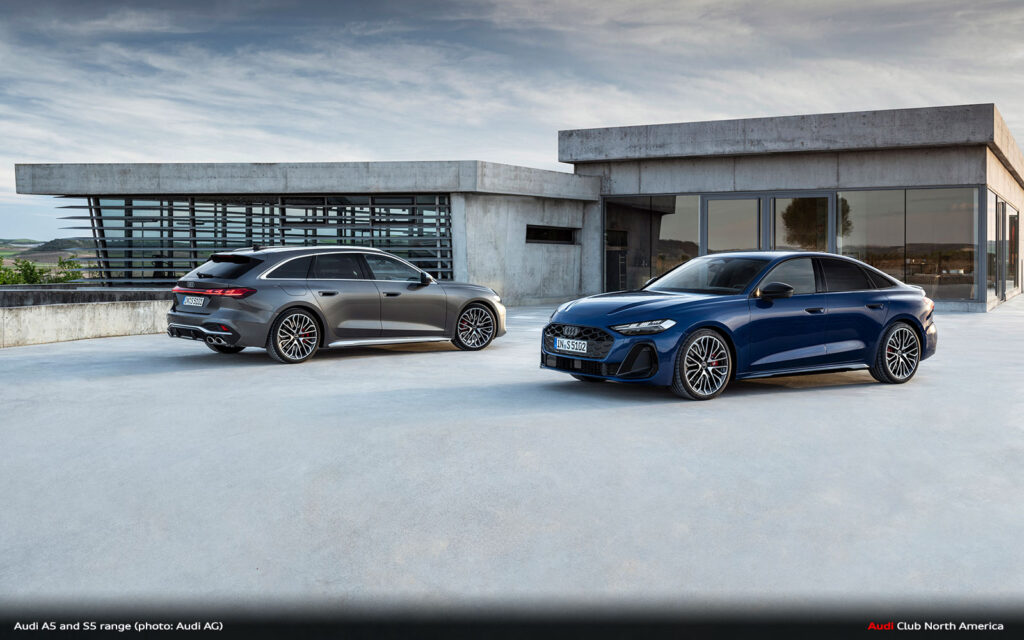
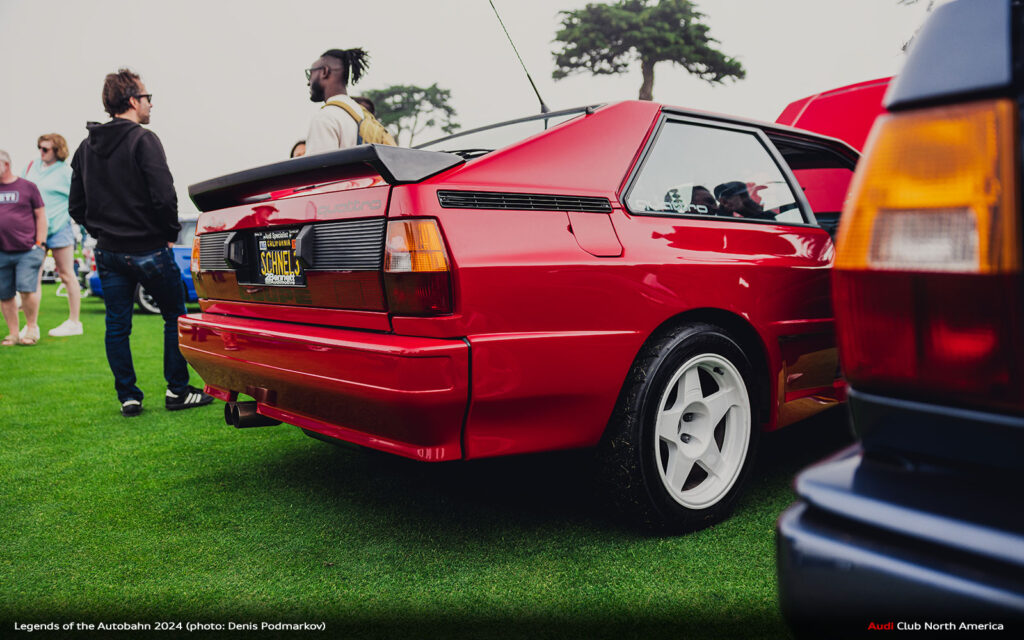
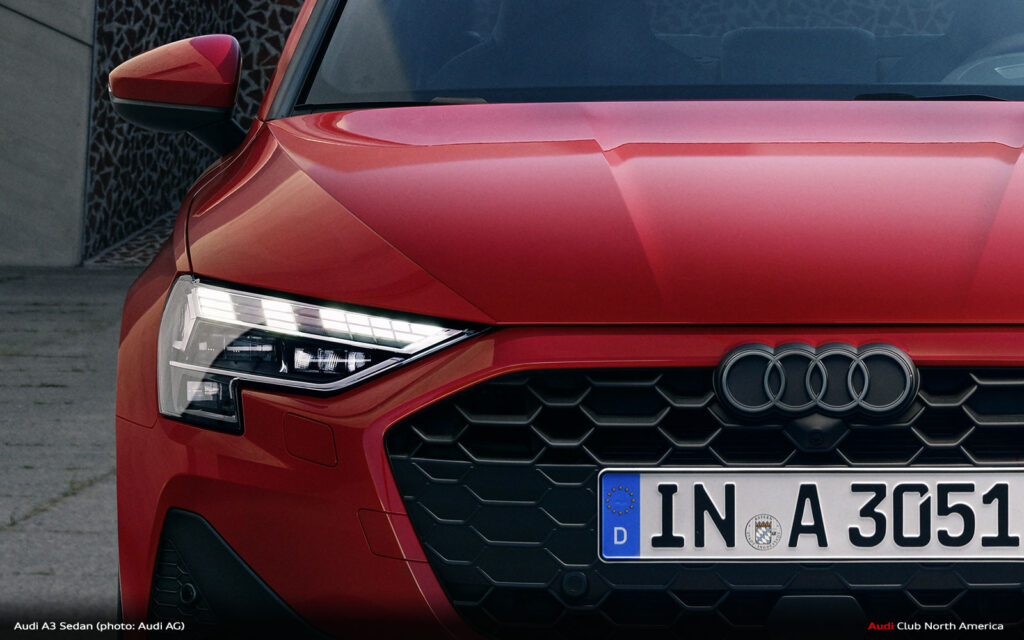


Responses